DOWNLOAD NEWS 2013/17
by Brian Wilson
2013/16 is here and the index of earlier editions is here.
Last time I included an index and I’m repeating the experiment this
time and making it cumulative: items marked 2013/16 are from the last
edition and those marked BR are from Brian Reinhart’s reviews in that
edition. I’ve also added my six Recordings of the Year (ROTY). † = Recording/Bargain of the Month
AHO Symphony No.15, etc. (BIS) (2013/17)
ARNOLD Symphony No.3, with BUTTERWORTH Shropshire Lad; VAUGHAN WILLIAMS Symphony No.3 (LPO/Arnold, Music of England
5, Beulah) (2013/16)
ARNOLD, FARKAS, IBERT, NIELSEN Music for Wind Quintet (BIS) (BR)
(2013/16)
BACH CPE Symphonies (Manze, Harmonia Mundi) (2013/17)
BACH JS Complete extant works (Warner USB) (ROTY)
Trio Sonatas (+ VIVALDI) (Bream/Malcolm, RCA) (2013/17)
Advent Cantatas (Gardiner/SDG, Suzuki/BIS) (2013/17)
† Christmas Oratorio (Layton, Hyperion) (2013/16); (Herreweghe,
Erato) (2013/17)
† Sacred Cantatas Volume 55 (Suzuki, BIS) (2013/16) (ROTY)
BARBER, COPLAND, GERSHWIN Piano Concertos (Wang/Oundjian, Chandos)
(2013/16)
BARTÓK Concerto for Orchestra (Stokowski) (Everest) (2013/16)
Miraculous Mandarin Suite; Music for strings, percussion and
celesta; Four Pieces (Gardner, Chandos) (2013/17)
BEDNALL Welcome all Wonders (Queen’s College, Oxford,
Signum) (2013/17)
BEETHOVEN Piano Concertos 1 and 3 (Jacoby, ICA) (2013/16)
Symphony No.7 (LSO/Krips, Everest) (2013/16)
Piano Sonatas 28-32 (Levit, Sony) (2013/16)
Piano Sonata No.30 (+ SCHUBERT Piano Sonata No.21, CHOPIN)
(Pressler, BIS) (BR) (2013/16)
BERLIOZ Bi-centennial Edition (Davis, LSO Live) (ROTY)
BRAHMS Piano Concertos (Hough, Hyperion) (2013/17)
Violin Concerto (Wolf/Collins); Hungarian Dances (Schmidt-Isserstedt);
Tragic Overture (Klemperer) (Beulah) (2013/16)
BRITTEN Violin Concerto, Sea Interludes (Orchid Classics) (2013/17)
Works for string orchestra (Camerata Nordica, BIS) (2013/16)
String Quartets (Takács, Hyperion; Endellion, Warner; Emperor,
BIS) (2013/16)
A Ceremony of Carols (in Hodie) (Sixteen, Coro) (2013/16)
A Ceremony of Carols, Missa Brevis, etc. (Britten Choral Edition
II, Finzi Singers, Chandos) (2013/17)
A Ceremony of Carols, Missa Brevis, etc (Westminster Cathedral,
Hyperion) (2013/17)
Britten to America (Elder, NMC) (2013/16)
BRUCKNER Symphony No.7 (LPO/Skrowaczewski) (BR) (2013/16)
BUTTERWORTH Shropshire Lad (Hallé/Boult) (see Arnold)
(2013/16)
Banks of Green Willow (LPO/Boult) (see Music of England 6) (2013/16)
† CHARPENTIER, Marc Antoine Noëls pour les Instruments (Ricercar) (2013/17)
CHILCOTT Rose in Winter (Commotio, Naxos) (2013/17)
CHOPIN Piano Works (Popowa-Zydrón, CD-Accord) (BR) (2013/16)
Nocturne in c-sharp minor (see Beethoven Piano Sonata No.30) (BR) (2013/16)
Nocturnes (Katin, Beulah) (2013/17)
COPLAND Piano Concerto (Chandos: see Barber) (2013/16)
CORRETTE Noël Symphonies (Arion Trio, Atma) (2013/16)
CORRETTE, DANDRIEU, DAQUIN Noëls (instrumental) (Les
Boréades, Atma) (2013/16)
DAQUIN Noëls (organ) (Herrick, Hyperion) (2013/16)
DEBUSSY La Mer (Munch) – see Music of France 1 (Beulah) (2103/17)
DOWLAND etc Jacobean Lute Music (Lindberg, BIS) (2013/17)
DUKAS L’Apprenti sorcier (Solti) – see Music of France 1
(Beulah) (2013/17)
ELGAR Falstaff (Boult) (see Music of England 6) (2013/16)
GERSHWIN Piano Concerto (Chandos: see Barber) (2013/16)
HANDEL Organ Concertos, Op.4 (Richter, Beulah) (2013/16)
HAYDN Symphonies 96 and 97 (Van Beinum, Beulah) (2013/16)
HERTEL Die Geburt Jesu Christi (CPO) (2013/17)
HOLST Perfect Fool (LPO/Boult) (see Music of England 6)
(2013/16)
† HUMPERDINCK Hansel and Gretel (in English) (Mackerras,
Chandos) (2013/17)
HURLSTONE, HYDE, D’OLLONE and WIREN Piano Trios (Trio
Anima Mundi, Divien Art) – also HURLSTONE Piano Concerto, Piano
Trio, etc (Lyrita) (2013/17)
HYDE Piano Trio see Hurlstone
IBERT Music for Wind Quintet (see Arnold) (BIS) (BR) (2013/16)
GINASTERA Estancia, Panambi and VILLA LOBOS Little Train (Goossens, Everest) (2013/16)
JANÁČEK Sinfonietta; Glagolitic Mass (Mackerras,
Ančerl) (Beulah)
LASSO Christmas Motets and Prophetiæ Sibyllarum (Weser-Renaissance, CPO) (2013/16)
LISZT Piano Music (Cameron, Cala) (2013/16)
MAHLER Symphony No.9 (Ludwig, Everest) (2013/16)
MENDELSSOHN String Quartet 5; Octet (Mandelring Quartet, Audite)
(2013/17)
MESSIAEN La Nativité (Ericsson, BIS) (2013/17)
MOERAN Violin Concerto – see Vaughan Williams (Little/Davis,
Chandos) (2013/17)
MONTEVERDI Heaven and Earth (King’s Consort, Vivat) (ROTY)
MORALES O Magnum mysterium (Cordes, CPO) (2013/17)
MOZART Clarinet Quintet and Trio (Naïve) (Meyer/Quatuor
Mosaïques, BR) (2013/16)
MOZETICH, LANGER, SCHNITTKE, BENNETT Violin Works (Mints, Quartz) (2013/17)
NIELSEN Music for Wind Quintet (See Arnold) (BIS) (BR) (2013/16)
D’OLLONE Piano Trio see Hurlstone
PITTS, John Piano Music (Kings, 1equalvoice) (2013/17)
PROKOFIEV Lieutenant Kijé; SHOSTAKOVICH Symphony No.9 (LSO/Sargent) (Everest) (2013/16)
PROKOFIEV Symphony No.5 (LSO/Sargent) (Everest) (2013/16)
RESPIGHI Pines and Fountains of Rome (Sargent,
Everest) (2013/16)
SAINT-SAENS Piano Concerto 2 (Lympany) see Music of France 1
SCARLATTI, A Pasotral Cantata (+ Christmas Concertos) (Standage,
Chandos) (2013/17)
SCHNITTKE Konzert zu drei (see Mozetich)
(2013/17)
SCHUBERT Works for Violin and Fortepiano II (Ross and Cole, Naxos)
(2013/16)
SCHUBERT Piano Sonata No.21 (see Beethoven) (BIS) (BR) (2013/16)
SHEPPARD Sacred Choral Works (St John’s, Cambridge, Chandos)
SHOSTAKOVICH Symphony No.6; Stepan Razin (Polyansky, Chandos)
(2013/16)
SHOSTAKOVICH Symphony No.9 (LSO/Sargent – see Prokofiev) (Everest)
(2013/16)
Symphony No.9; Stepan Razin (Kondrashin, HDTT) (2013/16)
SIBELIUS Symphonies 1 and 4 (Vänskä, BIS) (2013/4,
2013/17)
† STRAUSS, R Die Frau ohne Schatten (Böhm, Naxos
Archives) (2013/17)
SIBELIUS Symphonies Nos. 1 and 4 (Vänskä, BIS) (2013/17)
TAVERNER Missa Gloria tibi Trinitas, Magnificats (2013/15) (2013/17) (ROTY)
TCHAIKOVSKY Nutcracker (Dutch National Ballet, Arthaus
DVD and blu-ray) (ROTY)
Swan Lake (Järvi, Chandos) (2013/16)
TELEMANN Ouvertures (Orchestral Suites) (Zefiro, Arcana)
(2013/17)
VAUGHAN WILLIAMS Symphony No.3 (LPO/Boult) (see Arnold) (2013/16)
Greensleeves Fantasia; English Folk Song Suite (Boult) (see Music
of England 6) (2013/16)
The Lark Ascending with MOERAN, DELIUS and ELGAR (Little/Davis, Chandos) (2013/17)
On Wenlock Edge (+ DOVE, WARLOCK) (Padmore, Harmonia Mundi)
(2013/17)
VILLA LOBOS Little Train of the Caipira (see Ginastera)
(Everest) (2013/16)
VIVALDI Four Seasons and other concertos (Naïve)
(Europa Galante/Biondi, BR) (2013/16)
VIVALDI Trio Sonatas (+ BACH) (Bream/Malcolm, RCA) (2013/17)
WIREN Piano Trio see Hurlstone
ZELENKA Magnificat, Christmas Mass, Dixit Dominus (L’arpa festante, Genuin) (2013/16)
Christmas Collections (Christophers, Coro; Vänskä,
BIS; Hillier, Harmonia Mundi) (2013/16)
Christmas Collections († RIAS Kammerchor/Rademann,
Harmonia Mundi; Clare College, Harmonia Mundi); Holman, Hyperion; Verhoeff,
Christophorus; Fullington, Loft; Adrenacci, K&K; Toronto Consort,
Marquis; La Colombina, Accent; Ratstatt Ensemble, Carus; Various, Carus)
(2013/17)
Nine Lessons and Carols (King’s) (2013/17)
Music of England 5 – see ARNOLD Symphony No.3 (Beulah) (2013/16)
Music of England 6: VAUGHAN WILLIAMS, ELGAR, BUTTERWORTH and HOLST (Beulah) (2013/16)
Music of France 1: THOMAS, SAINT-SAENS Piano Concerto 2 (Lympany); DUKAS L’Apprenti sorcier (Solti); DEBUSSY La
Mer (Munch) (Beulah) (2013/17)
† Swingin’ at Maida Vale (Benny Carter, George Shearing,
Beulah) (2013/17)
Piers Lane goes to town (Hyperion) (2013/17)
Digital Discoveries (British Music) (NMC) (2013/17)
Christmas Recordings

 Despite
all the hype that brings the Christmas decorations out in shops and
restaurants ever earlier – the season to be jolly now seems to have
been brought forward to mid-September – for millions of people all over
the world the festival really begins when the single chorister intones Once in Royal David’s City as the choir of King’s College,
Cambridge, processes into the chapel on Christmas Eve. Over the
years Decca and EMI have brought out selections from the service but
last year the college opened business on their own record label with
the complete 2010 service directed by Stephen Cleobury, plus some additional
items, including a roll-call of the Cleobury commissions (KGS0001,
2 CDs). See John Quinn’s review for details; download from classicsonline.com (mp3) or stream from Naxos Music Library. Both come with pdf booklet
but its legibility will depend on the size of your monitor – it’s just
legible on a 23" screen.
Despite
all the hype that brings the Christmas decorations out in shops and
restaurants ever earlier – the season to be jolly now seems to have
been brought forward to mid-September – for millions of people all over
the world the festival really begins when the single chorister intones Once in Royal David’s City as the choir of King’s College,
Cambridge, processes into the chapel on Christmas Eve. Over the
years Decca and EMI have brought out selections from the service but
last year the college opened business on their own record label with
the complete 2010 service directed by Stephen Cleobury, plus some additional
items, including a roll-call of the Cleobury commissions (KGS0001,
2 CDs). See John Quinn’s review for details; download from classicsonline.com (mp3) or stream from Naxos Music Library. Both come with pdf booklet
but its legibility will depend on the size of your monitor – it’s just
legible on a 23" screen.
Christmas Recording of the Month
 Christmas!
Noël! Weihnachten!
Christmas!
Noël! Weihnachten!
Felix MENDELSSOHN BARTHOLDY (1809-1847) Frohlocket, ihr Völker
auf Erden, Op.79/1 [1:38]
Uwe GRONOSTAY (1939-2008) Die Nacht ist vorgedrungen [2:26]
Johann ECCARD (1553-1611) Ich lag in tiefster Todesnacht [2:46]
Max BRUCH (1838-1920) In der Christnacht, Op.60/1 [3:39]
Johannes BRAHMS (1833-1897) O Heiland, reiß die Himmel
auf, Op.74/2 [5:37]
Johann ECCARD Nun liebe Seel, nun ist es Zeit [2:59]
Über’s Gebirg Maria geht [3:07]
Arvo PÄRT (b.1935) Magnificat [6:47]
Anton BRUCKNER (1824-1896) Ave Maria [3:47]
Virga Jesse [5:01]
Francis POULENC (1899-1963) Salve Regina [4:20]
Edvard GRIEG (1843-1907) Ave maris stella [3:32]
Jan Pieterszoon SWEELINCK (1562-1621) Hodie Christus natus
est [3:16]
Michael PRAETORIUS (1571-1621) In dulci jubilo [4:23]
Es ist ein Ros entsprungen [3:01]
Francis POULENC Quatre motets pour le temps de Noël [11:09]
Eusebius MANDYCZEWSKI (1857-1929) Stille Nacht! Heilige Nacht! [3:57]
RIAS Kammerchor/Hans-Christoph Rademann – rec. January 2013. DDD.
Pdf booklet with texts and translations included
HARMONIA MUNDI HMC902170 [70:00] – from eclassical.com (mp3, 16– and 24-bit lossless)

 Hans-Christoph
Rademann is a most versatile conductor with a range from Schütz
and the Bach family to Wolfgang Rihm and a considerable discography
on Carus and Harmonia Mundi. There’s also some unusual fare here that’s
well worth listening to. Hands up those who had even heard of Eusebius
Mandyczewski, though his setting of Stille Nacht! will sound
familiar enough. Beautiful singing from the RIAS Choir and a fine booklet
of notes make this very enjoyable. If I must choose a memorable track
it has to be their performance of Arvo Pärt’s setting of the Magnificat.
Hans-Christoph
Rademann is a most versatile conductor with a range from Schütz
and the Bach family to Wolfgang Rihm and a considerable discography
on Carus and Harmonia Mundi. There’s also some unusual fare here that’s
well worth listening to. Hands up those who had even heard of Eusebius
Mandyczewski, though his setting of Stille Nacht! will sound
familiar enough. Beautiful singing from the RIAS Choir and a fine booklet
of notes make this very enjoyable. If I must choose a memorable track
it has to be their performance of Arvo Pärt’s setting of the Magnificat.
The recording is very good. One small oddity: the 24-bit version of
this download comes unusually at 24/48– you may need to reset your DAC.
Veni Emmanuel: Music for Advent
Chant: Veni, veni Emmanuel
William BYRD: Vigilate
Antiphon I: O Sapientia
Herbert HOWELLS: The fear of the Lord
Antiphon II: O Adonaï
Roderick WILLIAMS: O Adonai, et Dux domus
Antiphon III: O Radix Jesse
Michael PRAETORIUS (arr. Jan SANDSTRÖM) Es ist
ein Ros’ entsprungen
Antiphon IV: O Clavis David
John SHEPPARD: Audivi vocem de cælo
Antiphon V: O Oriens
John RUTTER: Hymn to the Creator of Light
Johann Sebastian BACH: Wie schön leuchtet der Morgenstern,
BWV436
Felix MENDELSSOHN: Say, where is He born, there shall a star
from Jacob (Christus)
Antiphon VI: O Rex Gentium
Peter WARLOCK: Bethlehem Down
Graham ROSS: I sing of a maiden*
Antiphon VII: O Emmanuel
John TAVENER: God is with us
Antiphon VIII: O Virgo virginum
Sergei RACHMANINOV: Bogoroditse Dyevo
Herbert HOWELLS: Magnificat (Gloucester Service)
Graham ROSS/Traditional O Come, O come, Emmanuel* (adapted from
a French Missal)
* world première recordings
Nicolas Haigh (organ scholar); Choir of Clare College, Cambridge/Graham
Ross – rec. 2012.
Pdf booklet with texts and translations included
HARMONIA MUNDI HMU907579 [76:31] – from eclassical.com (mp3 and lossless)
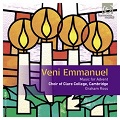
 Because
the University term is over by early December, several Cambridge colleges
have developed a tradition of holding an Advent Sunday carol service;
that from St John’s has been broadcast by BBC Radio 3 for several years.
This one, from Clare, is about as good as you could hope for, with an
attractive combination of old and new, well sung and recorded. I’ve
been pleased to see the record companies recently giving chances to
the Oxford and Cambridge colleges who are not normally associated with
music and this is a good example.
Because
the University term is over by early December, several Cambridge colleges
have developed a tradition of holding an Advent Sunday carol service;
that from St John’s has been broadcast by BBC Radio 3 for several years.
This one, from Clare, is about as good as you could hope for, with an
attractive combination of old and new, well sung and recorded. I’ve
been pleased to see the record companies recently giving chances to
the Oxford and Cambridge colleges who are not normally associated with
music and this is a good example.
Those who find John Rutter’s music saccharine should be more impressed
with his Hymn to the Creator of Light and the late John Tavener’s God is with us is a tribute to his memory, though not so intended
when it was recorded. Only the protracted ending of the arrangement
of Es ist ein Ros’ entsprungen struck a less than ideal note
for me. I’m not sure why eclassical.com provide two identical booklets.
(See also review by John Quinn.)
Heiligste Nacht: Music for Advent and Christmas by BUXTEHUDE, VIVALDI, TELEMANN, HOMILIUS, Michael HAYDN, MENDELSSOHN, REGER and SAINT-SAËNS
Performers include Dresden Chamber Choir, Vocal Consort and Instrumental
Concert; Estonian Philharmonic Chamber Choir; Talinn Chamber Orchestra;
Stuttgart Chamber Choir and Orchestra; Ratstatt Vocal Ensemble; Vienna
Chamber Choir and Orchestra; I Vocalisti; Württemberg Chamber Orchestra
of Heilbronn. Rec.? (P) 2007-2011. DDD.
CARUS 83.369 [78:55] – from eclassical.com (mp3 and lossless, no booklet) or stream from Naxos Music Library (with
minimalist pdf booklet)


This is a very mixed bag indeed – music for Advent and Christmas beginning
with a stylish performance of the Sinfonia and Chorus of Buxtehude’s Ihr lieben Christen, freut euch nun, BuxWV51, and ending with the
inevitable Stille Nacht. An attractive collection, despite its
very mixed pedigree, and well recorded, but the lack of texts is a handicap
– even the ‘booklet’ which Naxos Music Library and classicsonline.com
offer contains only the front and rear covers together with a list of
contents which duplicates the rear cover.
The inclusion of snippets from the Vivaldi Gloria and Stille
Nacht, of each of which you may well have more than one recording,
is also a negative consideration.
Nativity: Christmas Music from Georgian England
Luke Green (organ); Psalmody; The Parley of Instruments/Peter Holman
– rec. 2003. DDD
Pdf booklet with texts included
HYPERION CDA67443 [71:06] – from hyperion-records.co.uk (mp3 and lossless)
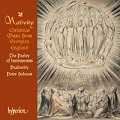
 Despite
the warm welcome that it received ten years ago, the CD is now available
only from the Archive Service but the download is readily available.
Some of the composers are anonymous and even those named you will probably
never have heard of, so this could be just what you are looking for
to break the mould of familiarity this Christmas. Only the setting of Lo he comes with clouds descending, still in use today, Joy
to the World, Thomas Adams’ organ variations on Adeste fideles and the hymn itself, are at all likely to be familiar.
Despite
the warm welcome that it received ten years ago, the CD is now available
only from the Archive Service but the download is readily available.
Some of the composers are anonymous and even those named you will probably
never have heard of, so this could be just what you are looking for
to break the mould of familiarity this Christmas. Only the setting of Lo he comes with clouds descending, still in use today, Joy
to the World, Thomas Adams’ organ variations on Adeste fideles and the hymn itself, are at all likely to be familiar.
The music is charming and accomplished rather than complex or memorable,
but it’s all very enjoyable and helps to dispel the idea that Christmas
was a cheerless affair in the late eighteenth century. You may recall
that the ‘highlight’ of the feast in Silas Marner was the
baking of lard cakes with IHS pricked on them and the recitation
of the Athanasian Creed with its ferocious damnations of all unbelievers
at Mattins. Some of the music recorded here would have helped soften
the occasion; in fact two ‘carrils’ are mentioned in the book, God rest you merry, gentlemen and Hark the erol angils [sic] sing. Neither of these is recorded here but the latter
is included on another enjoyable recording by the same performers of
English Christmas music from this period on budget-price Hyperion Helios CDH55325 – review and Christmas
Downloads 2009.
Christmas in Russia: Russian Orthodox Christmas Vigil
Andrey Bliznyuk (priest); Alexy Zaitsev, Vladislav Sokolov (deacon)
Don Cossack Choir/Marcel Nikolayevich Verhoeff – rec.2008. DDD
Pdf booklet with texts (in Cyrillic) and translations included
CHRISTOPHORUS CHR77336 [76:21] – from eclassical.com (mp3 and lossless)


Unless you are Russian, Bulgarian or Ukrainian, the music here is likely
to be just as much out-of-the-way as on the Hyperion recording above.
It’s the Christmas Eve version of what is sometimes known as All
Night Vespers, actually Compline and Matins of the greater feasts,
in this case of Christmas, celebrated in Russia on 6 January.
I take the performances, given their source and the fact that they were
recorded in a church in Moscow, to be authentic – they certainly sound
so and they are well recorded: turn down the volume a notch or two.
An American Christmas: Shapenote Carols from New England and Appalachia
Tudor Choir/Doug Fullington – rec. 2002. DDD
LOFT LRCD-1060 [78:20] – from eclassical.com (mp3 and lossless, no booklet) or stream from Naxos Music Library (with
booklet of texts and music examples)

 Shape-notes
originated in New England in the late eighteenth-century as a simple
notation for congregational singing. Unlike tonic sol-fa, the notes
are printed on a musical stave, with the shape of the note representing
the pitch. Some of the music on this anthology will be more familiar
than that on the Hyperion recording, though not in the simpler, mostly
unison settings performed here: as the booklet puts it, these are ‘old
favorites in unfamiliar guises and … now obscure songs that were
once as familiar to rural Americans as “White Christmas” is
now’.
Shape-notes
originated in New England in the late eighteenth-century as a simple
notation for congregational singing. Unlike tonic sol-fa, the notes
are printed on a musical stave, with the shape of the note representing
the pitch. Some of the music on this anthology will be more familiar
than that on the Hyperion recording, though not in the simpler, mostly
unison settings performed here: as the booklet puts it, these are ‘old
favorites in unfamiliar guises and … now obscure songs that were
once as familiar to rural Americans as “White Christmas” is
now’.
The Tudor Choir and their director Doug Fullington, who sang with the
Tallis Scholars on their US tour in 2000, are past masters in this repertoire.
There’s a particularly fine performance of a canonical setting of While
shepherds watched, where the choir’s virtuosity nevertheless retains
some of the rawness of rural singing. With good recording, this is most
enjoyable; it’s just a shame that you can obtain the booklet only if
you can obtain it from the Naxos Music Library or by downloading in
mp3 from classicsonline.com.
South American Christmas: Es Sol claro e luciente
Grupo de Canto Coral Buenos Aires/Nestor E Adrenacci – rec.?
K&K VERLAGSANSTALT KuK296 [40:48] – from eclassical.com (mp3, 16– and 24-bit lossless, no booklet) or stream from Naxos Music
Library (with pdf booklet).
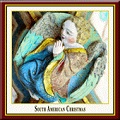
 Vigorous
Baroque Latin American Christmas music in vigorous performances and
recorded live at a UNESCO concert at Kloster Maulbronn. As well as Iberian
composers, of whom the best-known is Juan de Araujo – Los coflades
de la estleya – ‘the companions of the star are going to Bethlehem’,
track 9 – there’s traditional Amerindian repertoire. For all the vigour
of the opening traditional cachuas, the third track, Juan García
de Zéspedes’ Convidando está la noche – ‘the
night is inviting’ – outdoes them rhythmically. There’s gentle music
here, too, such as Gaspar Fernandes’ lullaby Mi niño dulce
e sagrado – ‘my sweet holy child’ – on track 4.
Vigorous
Baroque Latin American Christmas music in vigorous performances and
recorded live at a UNESCO concert at Kloster Maulbronn. As well as Iberian
composers, of whom the best-known is Juan de Araujo – Los coflades
de la estleya – ‘the companions of the star are going to Bethlehem’,
track 9 – there’s traditional Amerindian repertoire. For all the vigour
of the opening traditional cachuas, the third track, Juan García
de Zéspedes’ Convidando está la noche – ‘the
night is inviting’ – outdoes them rhythmically. There’s gentle music
here, too, such as Gaspar Fernandes’ lullaby Mi niño dulce
e sagrado – ‘my sweet holy child’ – on track 4.
At 41 minutes, this is all too short; the eclassical.com per-second
pricing policy takes care of that, but surely the audience on the night
got more? Unfortunately, too, the booklet contains no texts, only first
lines and translations of them, though you should find some of the texts
online. Be aware that eclassical.com have two versions of this download
with different covers, for the same price in mp3 and 16-bit lossless;
only the version listed above also comes in 24-bit sound for a little
more. There’s also an mp3-only download from classicsonline.com,
with pdf booklet, for just £4.99.

 There’s
a longer selection of Christmas Music from Latin America and Spain from The Toronto Consort/David Fall is on Marquis Classics MAR-435 [67:51] – rec. 2011, from classicsonline.com (mp3) or stream from Naxos Music Library.
There’s
a longer selection of Christmas Music from Latin America and Spain from The Toronto Consort/David Fall is on Marquis Classics MAR-435 [67:51] – rec. 2011, from classicsonline.com (mp3) or stream from Naxos Music Library.
There’s one overlap – another version of Convidando está la
noche – and you may well have one or more recordings of the ubiquitous Riu, riu, chia, but this also is an enjoyable set of performances,
slightly more refined than the K&K but equally lively, well recorded,
albeit mp3 only, and with pdf booklet containing helpful notes but no
texts.

 More
refined still is Christmas in Spain and the Americas in the Sixteenth
Century (La Colombina, Accent ACC96114 [70:05]) from classicsonline.com (mp3, with pdf booklet) or stream from Naxos Music Library. There are
Latin settings here by composers such as Victoria, Guerrero and Morales
but also texts in Spanish which were interspersed in the office of the
day at Christmas, not always with the approval of the authorities but
always enjoyable.
More
refined still is Christmas in Spain and the Americas in the Sixteenth
Century (La Colombina, Accent ACC96114 [70:05]) from classicsonline.com (mp3, with pdf booklet) or stream from Naxos Music Library. There are
Latin settings here by composers such as Victoria, Guerrero and Morales
but also texts in Spanish which were interspersed in the office of the
day at Christmas, not always with the approval of the authorities but
always enjoyable.
The four singers of La Colombina perform all this music with aplomb
and with evident enjoyment and the 1996 recording, even though mp3 only,
is good. This time the booklet includes texts and translations.

 Assisi
Christmas Cantatas consists of premiere recordings of music associated
with Assisi by Italian composers of the late 17th and early 18th centuries.
Apart from Corelli’s Christmas Concerto, Op.6/8 – a shame that it’s
included, as you’re likely to have at least one recording – the only
composer that you’re likely to have heard of is Nicola Porpora (Stelle
lucide). Ruth Ziesak (soprano), Ingeborg Dansk (contralto) and L’Arte
del Mondo are directed by Werner Erhardt in fine performances of unfamiliar
but attractive repertoire. (Phoenix 149 [67:32] – rec. 2008.)
For full track details see review by Johan van Veen. From eclassical.com (mp3 and lossless, no booklet) or stream from Naxos Music Library with
pdf booklet of texts and translations.
Assisi
Christmas Cantatas consists of premiere recordings of music associated
with Assisi by Italian composers of the late 17th and early 18th centuries.
Apart from Corelli’s Christmas Concerto, Op.6/8 – a shame that it’s
included, as you’re likely to have at least one recording – the only
composer that you’re likely to have heard of is Nicola Porpora (Stelle
lucide). Ruth Ziesak (soprano), Ingeborg Dansk (contralto) and L’Arte
del Mondo are directed by Werner Erhardt in fine performances of unfamiliar
but attractive repertoire. (Phoenix 149 [67:32] – rec. 2008.)
For full track details see review by Johan van Veen. From eclassical.com (mp3 and lossless, no booklet) or stream from Naxos Music Library with
pdf booklet of texts and translations.
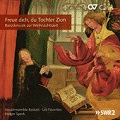
 It’s
back to German-speaking Central and Northern Europe for a collection
of Advent and Christmas music, Freue dich, du Tochter Sion – ’Rejoice, O daughter of Sion’ – from Ratstatt Vocal Ensemble on Carus
83.393 [57:40] – from classicsonline.com (mp3) or stream from Naxos Music Library.
It’s
back to German-speaking Central and Northern Europe for a collection
of Advent and Christmas music, Freue dich, du Tochter Sion – ’Rejoice, O daughter of Sion’ – from Ratstatt Vocal Ensemble on Carus
83.393 [57:40] – from classicsonline.com (mp3) or stream from Naxos Music Library.
The music is by Hammerschmidt, Selle, Eccard, Schein, Prætorius,
Rosenmüller, Lübeck and Bernhard and none of it
is likely to be too familiar. There’s no booklet with this one, only
the titles on the back cover. You may find a lossless version from eclassical.com
if you wait a little longer.
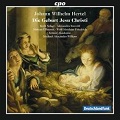
 Johann
Wilhelm HERTEL (1727-1789) Die Geburt Jesu Christi (The birth
of Jesus Christ)
Johann
Wilhelm HERTEL (1727-1789) Die Geburt Jesu Christi (The birth
of Jesus Christ)
Berit Norbakken Solset, Alexandra Rawohl (sopranos); Marcus Ullmann
(tenor); Wolf-Matthias Friedrich (bass)
Kölner Akademie/Michael Alexander Willens – rec. January 2013.
DDD.
CPO 7778092 [63:35] – from eclassical.com (mp3 and lossless, no booklet) or stream from Naxos Music Library (with
abridged pdf booklet – track listing but no texts)
Don’t expect anything close to matching Bach’s Christmas Oratorio or Schütz’s Geburt Jesu Christi, but this is attractive
music, well performed and recorded. No texts, however.

 Cristóbal
de MORALES (c.1500-1553) O magnum mysterium and other Christmas
motets are performed by Weser-Renaissance/Manfred Cordes on CPO 7778202 [69:18], recorded in January 2013 – from eclassical.com (mp3) or stream from Naxos Music Library. Neither offers the booklet
though NML do give you the back cover with the list of tracks and timings.
Cristóbal
de MORALES (c.1500-1553) O magnum mysterium and other Christmas
motets are performed by Weser-Renaissance/Manfred Cordes on CPO 7778202 [69:18], recorded in January 2013 – from eclassical.com (mp3) or stream from Naxos Music Library. Neither offers the booklet
though NML do give you the back cover with the list of tracks and timings.
These are attractive performances of Morales’ intricate polyphony, though
I marginally prefer the Brabant Ensemble on Hyperion in O magnum
mysterium (with Magnificat and Lamentations, CDA67694 – review).

 Christmas
Recording of the Month
Christmas
Recording of the Month
Marc-Antoine CHARPENTIER (1643-1704) Noëls pour les instruments,
H534, plus Christmas music in instrumental arrangements, and his settings
of other French carols feature on a new recording from Ricercar alongside
music for Benediction (pour un reposoir) which gives its name
to the collection. The collection concludes with his Sonata à8,
H548a. Performances by Les Dominos and Les Agréments are directed
by Florence Malgoire (RIC338) from eclassical.com (mp3 and lossless) or stream from Naxos Music Library, both with large
pdf booklet of texts and translations.
The performances here a shade less unbuttoned than one some other recordings
of this repertoire – more Noëls by Corette and Daquin feature
in 2013/16 – but the whole album is very enjoyable.
Bob CHILCOTT (b.1955) The Rose in the Middle of Winter
Commotio/Matthew Berry – rec. April 2013
Pdf booklet with texts included
NAXOS 8.573159 [79:29] – from classicsonline.com (mp3 and lossless flac) or stream from Naxos Music Library

 (for
full details see review by John Quinn)
(for
full details see review by John Quinn)
This latest offering from Bob Chilcott has been hailed,
with justification, as in the John Rutter mould and there’s nothing
wrong with that in my book, though I know some traditionalists for whom
anything of that sort is anathema.
John Quinn has said it all in his review,
so I need only add that the download does justice to the music, performance
and recording. Not too sure about the cover shot of the rose, though
– I thought it was a cross-section of a frozen red cabbage at first.
David BEDNALL (b.1979)
Welcome all Wonders – A Christmas Cantata (2011)
Choir of The Queen’s College, Oxford/Owen Rees
Olivia Clarke and Paul Manley (organ); Simon Desbruslais (trumpet) –
rec. March 2012. DDD
pdf booklet with texts included
SIGNUM CLASSICS SIGCD335 [77:52] – from classicsonline.com (mp3) or stream from Naxos Music Library
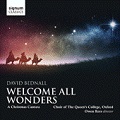
 Once
again I refer you to John Quinn for a detailed review of this ‘original and very rewarding addition to the Christmas choral
repertoire’. Without any collusion between us, you can be pretty certain
that our preferences coincide, so once more it remains only for me to
add that this is powerful music, not particularly ’Christmassy’ in the
conventional sense and certainly not over-sweet – track 3, A Virgin
shall conceive, sounds more like Wilfred Owen’s ’bugles calling
… from sad shires’. It’s all well performed and recorded. the full
booklet comes with the download and the mp3 download (no lossless equivalent
on this occasion) is good.
Once
again I refer you to John Quinn for a detailed review of this ‘original and very rewarding addition to the Christmas choral
repertoire’. Without any collusion between us, you can be pretty certain
that our preferences coincide, so once more it remains only for me to
add that this is powerful music, not particularly ’Christmassy’ in the
conventional sense and certainly not over-sweet – track 3, A Virgin
shall conceive, sounds more like Wilfred Owen’s ’bugles calling
… from sad shires’. It’s all well performed and recorded. the full
booklet comes with the download and the mp3 download (no lossless equivalent
on this occasion) is good.
Try either the Chilcott or the Bednall from Naxos Music Library, as
I did, and you’ll want the classicsonline.com download – again, as I
did. A small grumble: the texts of the first two sections is from Pope,
about whose ‘poetry’ I concur with Keats (‘rocking horse rhyme’) but
things get much better thereafter, with words by the likes of Milton
and Crashaw.
Weihnachten durch die Jahrhunderte II (Christmas through the
Centuries II)
Performers include Camerata Vocale Freiburg, Augsburger Domsingknaben,
Knabenchor Hannover, Flautando Köln
Pdf booklet included – no texts.
ARS MUSICI AM233746 [70:58 + 74:27] – from classicsonline.com (mp3) or stream from Naxos Music Library
(Full list of contents and performers online at classicsonline.com or naxosmusiclibrary.com.)
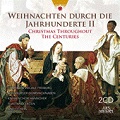
 The
programme, a mix of the reasonably familiar and the unfamiliar, contains
what it says on the tin – beginning with chant and proceeding via the
likes of Senfl and Prætorius to excerpts from Bach’s Christmas
Oratorio which end CD1. CD2 commences with Leopold Mozart’s Musical
Sleighride – not Christmas music specifically, but wintry – and
proceeds via Haydn. Mendelssohn and Reger to excerpts from Alfred Koerppen’s
(b.1926) Zu Weihnachten in Deutschland at the end. If Koerppen’s
dates fill you with dread at the prospect of neo-post-serial racket
– whatever that might be – let me assure you that his Christmas music,
also available complete on AM232344, from Naxos Music Library,
is very traditional. The bells of Freiburg Munster frame the whole programme.
The
programme, a mix of the reasonably familiar and the unfamiliar, contains
what it says on the tin – beginning with chant and proceeding via the
likes of Senfl and Prætorius to excerpts from Bach’s Christmas
Oratorio which end CD1. CD2 commences with Leopold Mozart’s Musical
Sleighride – not Christmas music specifically, but wintry – and
proceeds via Haydn. Mendelssohn and Reger to excerpts from Alfred Koerppen’s
(b.1926) Zu Weihnachten in Deutschland at the end. If Koerppen’s
dates fill you with dread at the prospect of neo-post-serial racket
– whatever that might be – let me assure you that his Christmas music,
also available complete on AM232344, from Naxos Music Library,
is very traditional. The bells of Freiburg Munster frame the whole programme.
Performances are variable – the trebles on some of the tracks on CD1
are a bit painful to hear – but generally good/very good and the recording
does them justice. The lack of texts in the booklet creates a problem,
however.
I haven’t had time to hear Volume I (AM233599), but it, too,
is available for download from classicsonline.com.
Incarnation
Matthew MARTIN Adam lay ybounden [3·39]
Veni, Veni Emanuel (13th century) [3:30]
Herbert HOWELLS Long, long ago [6:00]
Lullay, lullay: Als I lay on Yoolis Night (14th century) [7:16]
Francis POTT Balulalow [2:56]
Qui creavit celum (13th/14th century) [2:52]
Jonathan DOVE The Three Kings [4:37]
This endere nyghth I saw a syghth (15th/16th century) [7:06]
Kenneth LEIGHTON A Hymn of the Nativity [6:54]
Letabundus (12th/13th century) [3:23]
Benjamin BRITTEN A Boy was Born [29:10]
Trebles of Copenhagen Royal Chapel Choir
Gabrieli Consort/Paul McCreesh – rec. December 2012. DDD
Pdf booklet with texts included
SIGNUM SIGCD346 [77:25] – from classicsonline.com (mp3) or stream from Naxos Music Library
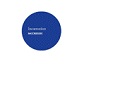
 I’m
delighted to see Paul McCreesh’s own Winged Lion label, in conjunction
with Signum, renewing the tradition of a Christmas album from the Gabrielis,
such as DG Archiv used to produce. The blurb describes this as: An inspiring
sequence of Christmas music ancient and modern, culminating in Britten’s
virtuosic choral masterpiece, A Boy Was Born. I can’t really
argue with that. Britten apart, there’s an interesting blend here of
old (12th/13th to 15th/16th centuries) and new, with three living composers,
Messrs Martin (b.1976), Pott (b.1957) and Dove (b.1959).
I’m
delighted to see Paul McCreesh’s own Winged Lion label, in conjunction
with Signum, renewing the tradition of a Christmas album from the Gabrielis,
such as DG Archiv used to produce. The blurb describes this as: An inspiring
sequence of Christmas music ancient and modern, culminating in Britten’s
virtuosic choral masterpiece, A Boy Was Born. I can’t really
argue with that. Britten apart, there’s an interesting blend here of
old (12th/13th to 15th/16th centuries) and new, with three living composers,
Messrs Martin (b.1976), Pott (b.1957) and Dove (b.1959).
There’s nothing to rival the Britten but everything here receives a
performance of such quality as to make the whole programme very worthwhile
and the recording is very good. Only the inclusion of the Britten makes
me hesitate – very slightly – to commend this to those who already have
good recording of A Boy was Born.

 Olivier
MESSIAEN (1908-1992) La Nativité du Seigneur, 9 méditations
pour orgue (1935)
Olivier
MESSIAEN (1908-1992) La Nativité du Seigneur, 9 méditations
pour orgue (1935)
Hans-Ola Ericsson (1987 Grønlund Organ of Luleå Cathedral)
– rec.1988. DDD.
Pdf booklet included
BIS-CD-410 [61:13] – from eclassical.com (mp3 and lossless)
This is a good time of year to remind you of the review of this recording
which Dan Morgan and I wrote in September 2011.
The links to passionato.com downloads listed there no longer apply;
choose the eclassical.com link or you may wish to consider Olivier Latry’s
complete set of Messian Organ Works on DG from 7digital.com.


If you were entranced by hearing the beautiful Alessandro SCARLATTI Pastoral Cantata played by Rob Cowen on Radio 3 on 8 December, let me
remind you of its availability from theclassicalshop.net. CHAN0754 contains the Scarlatti plus Telemann’s In dulci jubilo and Christmas concertos by Manfredini, Vivaldi and Corelli;
in the run-up to Christmas this is being offered at £2.49 (mp3)
or £3.99 (lossless).
I thought this virtually self-recommending – DL
Roundup December 2008 – and still do. Be aware, however, that Johan
van Veen was much less impressed – review.
***
NMC Recordings
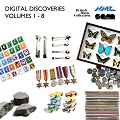
NMC have released a special set of eight CDs, available singly or collectively,
entitled Digital Discoveries (British Music Collection). Individual
volumes can be downloaded for £5.99 (mp3) or £6.99 (flac)
and the complete set costs £35 – details from nmcrec.co.uk.
I have to admit that on first hearing much of the music lies outside
my comfort zone but new music of this kind tends to grow on me and I’m
persevering, so I’d encourage even crusty old traditionalists like myself
to give it a go.
The NMC Britten recording which I reviewed in 2013/16 (NMC D190)
can be downloaded in mp3 or flac or ordered on CD from nmcrec.co.uk.
It’s also available from amazon.co.uk and iTunes.
***
Archipel Machaut – Medieval Music and New Music
Mixtura; Katharina Bäuml (shawm); Margit Kern (accordion)
rec. 5-8 November 2012, Hainsfarth Synagogue, Hainsfarth, Germany
Pdf booklet included
GENUIN GEN13284 [66:39] – from eclassical.com (mp3, 16– and 24-bit lossless) or stream from Naxos Music Library
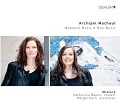 (see review by Jake Barlow for full track details)
(see review by Jake Barlow for full track details)
This one slipped past me until Jake Barlow chose it as one of his Recordings
of the Year. I must admit to normally being underwhelmed
by arrangements of medieval music with modern instruments – even by
the much-feted Officium CDs – and by combinations of old and new. This
one, however, works well for me, not so much that I might have made
it my Recording of the Year but well enough for me to enjoy it.
Those of a nervous disposition might be well advised to skip the penultimate
track, OD.
John TAVERNER (c.1490-1545)
Missa Gloria tibi Trinitas [41:21]
Magnificat for four voices [11:04]
Magnificat for five voices [13:23]
Magnificat for six voices [13:13]
The Tallis Scholars/Peter Phillips – rec. Merton College Chapel, Oxford,
2013. DDD.
Pdf booklet with texts and translations included
GIMELL CDGIM045 [79:03] – from gimell.com (mp3 and various 16– and 24-bit lossless formats) or hyperion-records-co.uk (mp3, 16/44.1, 24/96 and 24/176.4)
 I’ve
already made this Recording of the Month (2013/15) and
it’s also one of my Recordings of the Year, so I’m not
surprised that Geoff Molyneux has also fallen for its charms:
I’ve
already made this Recording of the Month (2013/15) and
it’s also one of my Recordings of the Year, so I’m not
surprised that Geoff Molyneux has also fallen for its charms:
The Tallis Scholars and their director Peter Phillips crown forty years’
achievement in performing and recording polyphony with this magnificent
performance of Missa Gloria tibi Trinitas by John Taverner. One
of this composer’s greatest works, the Missa is also one of the
most difficult to perform. For example, in the very first section, Gloria we hear some very high passages in the sopranos, performed here seemingly
effortlessly and with great beauty. Generally speaking the singers must
excel in very wide registers and the Tallis Scholars are certainly not
wanting in this regard.
For much of the time there are two voices to a part but sometimes only
one, and this provides for an enormous variety of textural possibilities.
The ear never tires of hearing ever-new textures, performed here with
great sensitivity and variety of mood, dynamics and expression. Excellent
balance is always maintained even when the vocalists are working so
hard to achieve perfect intonation, particularly in passages in high
registers.
Each section of the Missa is quite long but the singers maintain
the intensity and concentration throughout, and the quality of the performance
is never compromised. Overall, Peter Phillips and his singers seem to
have a rather more relaxed view of this work than on their earlier recording
from 1983. No doubt this is the result of so many years of experience
in performing this style of music.
It is all beautifully and expressively phrased and Peter Phillips displays
his usual ear for balance as well as an ability to steer these lengthy
and complex movements to successful climaxes.
The three settings of the Magnificat are equally well performed.
The four voice version is the easiest to listen to as the points of
imitation make the structure very clear. The five voice Magnificat sounds very different, partly due to the lower voices being used. Listen
for example to the gorgeous texture at Quia fecit mihi magna qui
potens est and also to the final section, Gloria. The beautiful
deep sound is tellingly interrupted by the sopranos for the concluding
line of the text. The extreme difficulty and virtuosic technique required
in the performance of the Magnificat for six voices reminds us
of the Missa. This is very much evidenced in the magnificent
account of the Gloria Patri, et Filio which brings this superb
recording to its conclusion.
As usual on Gimell recordings the sound is excellent and benefits from
the acoustics of the venue at the Chapel of Merton College, Oxford.
Geoffrey Molyneux
John SHEPPARD (c.1515/20-1558) Sacred Choral Works
Gaude gaude gaude Maria [14:00]
In pace in idipsum [6:09]
The Lord’s Prayer [3:01]
In manus tuas Domine [4:23]
Mass ’The Western Wynde’: Gloria [4:03]
Hæc Dies [2:34]
Mass ’The Western Wynde’: Credo [4:20]
Sanctus [3:10]
Benedictus [1:50]
Agnus Dei [5:03]
Christ rising again [3:48]
Spiritus Sanctus procedens II [9:58]
Æterne Rex altissime [4:24]
Libera nos 1 [3:18]
Choir of St John’s College, Cambridge/Andrew Nethsingha – rec. January
2013. DDD/DSD
Pdf booklet with texts and translations included
CHANDOS CHSA/CHAN0401 [70:01] – from theclassicalshop.net (SACD, mp3 16– and 24-bit lossless)
 St
John’s and Andrew Netsingha here boldly go where groups associated with
the other, older university have made their mark – The Clerkes of Oxenford,
The Tallis Scholars, The Sixteen and Christ Church Cathedral Choir in
particular. My introduction to the music of John Sheppard came from
The Clerkes and my benchmark for the Western Wind Mass is the Tallis
Scholars’ recording, an added attraction of which is its availability
in a 2-for-1 package (Gimell CDGIM210: Bargain of the Month – review).
St
John’s and Andrew Netsingha here boldly go where groups associated with
the other, older university have made their mark – The Clerkes of Oxenford,
The Tallis Scholars, The Sixteen and Christ Church Cathedral Choir in
particular. My introduction to the music of John Sheppard came from
The Clerkes and my benchmark for the Western Wind Mass is the Tallis
Scholars’ recording, an added attraction of which is its availability
in a 2-for-1 package (Gimell CDGIM210: Bargain of the Month – review).
In direct comparison I’d still choose that Gimell recording for the Western Wind Mass, partly because I prefer to hear it in one
go rather than divided into three sections, as on Chandos. I also prefer
the slightly more leisurely pace at which Peter Phillips leads The Tallis
Scholars on that recording. That’s not to say that it sounds rushed
on Chandos, merely that I like the extra room to breathe which The Scholars
give it – as also do The Sixteen and Harry Christophers on another splendid
bargain set of English polyphonic music on Hyperion (CDS44401/10 – 10 CDs from hyperion-records.co.uk for £40 in mp3 or lossless: Bargain of the Month – review).
In one important respect St John’s outshine even The Tallis Scholars.
Archbishop Cranmer’s directive on setting English texts was designed
to make the words paramount yet, though Sheppard’s setting of the Lord’s
Prayer is simpler than his Latin works, it’s still hard to make
the words audible. The Scholars have not recorded this, but they did
include it in the concert in Canterbury on which I reported for Seen
and Heard – here – and others have recorded it. I had yet to hear the words with any
degree of clarity, even in the flesh in Canterbury, until this new Chandos
recording, which achieves an ideal combination of words and music.
That’s partly due to the quality of the recording, especially in 24/96
format. The first time through I mistakenly left my DAC set at 24/44.1,
which sounded fine, but re-setting it the next time round added a degree
of sharpness to the sound which answers the question, is it worth paying
a little more for the 24/96? On the other hand, if you’re looking to
economise with the mp3, that’s pretty good, too. If you must have SACD
or 24-bit download the Chandos recording is a must. If you prefer Sheppard’s
music sung by an all-male choir, too, the St John’s recording will appeal,
as will the recording of his Second Service and other works from Christ
Church Cathedral Choir, Oxford, with only a few items overlapping with
St John’s, on Nimbus NI5480 – review.
In a spirit of ecumenism the new recording acknowledges Sheppard’s links
with Oxford – specifically with Magdalen College – by including Magdalen
Bridge and Tower on the cover and a 17th-century view of the College
on page 2 of the booklet. The notes in the booklet are an additional
recommendation, though I’m not sure why hæreses (heresies,
false beliefs) in Gaude, gaude, virgo Maria is translated as
’rivalry of beliefs’.
Jacobean Lute Music
John DOWLAND (1563-1626) A Fancy; Battle Galliard; Sir John Langton’s
Pavan
Thomas ROBINSON (c. 1560-1610) Merry Melancholy; A Galliard;
Walking in a Country Town; A Gigue; The Spanish Pavan; A Gigue; A Toy;
Row Well, you Mariners
Robert JOHNSON (c. 1583-1633) Pavan; Fantasia
Daniel BACHELER (1572-after 1610) Mounsiers Almain; Prelude; La Jeune Fillette; Courante; Pavan
Cuthbert HELY (fl. 1620-48) Fantasia; Saraband
Jacques GAULTIER [?] (fl. 1617-1652) Two Courantes; Cloches
Anonymous A Scottish Dance; Draw Near to Me and Love Me; Hence
to me Molly Gray; A Scottish Tune; Scottish Hunts Up; Prelude; John
Come Kiss Me Now
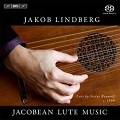 Jakob
Lindberg (lute by Sixtus Rauwolf, Augsburg c.1590)
Jakob
Lindberg (lute by Sixtus Rauwolf, Augsburg c.1590)
BIS BIS-SACD-2055 [81:12] – from eclassical.com (mp3, 16– and 24-bit lossless)
(Due for release on SACD in January 2014, but available for download
in advance).
Of those masters of the lute who have flourished since the pioneering
days of Julian Bream (see below) none has been more accomplished or
productive than Jakob Lindberg – I count 42 recordings in the current
catalogue, 35 of them for BIS, all available for download from eclassical.com.
The music here is mostly less well known but well worth hearing in such
fine performances, so well recorded.
Georg Philipp TELEMANN (1678-1741)
Ouvertures à 8 per tre oboi, fagotto, archi e continuo (Orchestral
Suites)
Ouverture in D, TWV55:D15 [22:19]
Ouverture in d minor, TWV55:d3 [26:09]
Ouverture in B, TWV:B10 [24:49]
Zefiro/Alfredo Bernardini – rec. May 2010. DDD.
Pdf booklet included
ARCANA A371 [73:17] – from eclassical.com (mp3 and lossless) or stream from Naxos Music Library
 Like
the Orchestral Suites of Bach, Telemann’s Overture/Suites are composed
of dance tunes, sometimes with thematic links between movements. Apart
from a few well-known examples, however, Telemann’s are less well known
and performed than the Bach, yet everything here is thoroughly delightful
and the sprightly performances are highly enjoyable. The recording does
full justice to the playing.
Like
the Orchestral Suites of Bach, Telemann’s Overture/Suites are composed
of dance tunes, sometimes with thematic links between movements. Apart
from a few well-known examples, however, Telemann’s are less well known
and performed than the Bach, yet everything here is thoroughly delightful
and the sprightly performances are highly enjoyable. The recording does
full justice to the playing.
The opening Suite, D:15, also features
on a BIS recording from L’Arte dei Suonatori which is also very enjoyable
(BIS-SACD-1979 – review and DL
News 2013/3). You can compare the two in Naxos Music Library; overall,
the BIS recording digs a little deeper into the music and varies the
mood more, whereas the new one on Arcana is more lively. Both are well
worth consideration; the availability of 24-bit sound on BIS will appeal
more to audiophiles but the 16-bit Arcana is very good.
Johann Sebastian BACH (1685-1750) Trio Sonata No.1 in E-flat,
BWV525 [10:41]
Antonio VIVALDI (1678-1741) Sonata in C, RV82 [10:03]
Johann Sebastian BACH Trio Sonata No.5 in C, BWV529 [13:18]
Antonio VIVALDI Sonata in g minor, RV85 [7:36]
Julian Bream (lute); George Malcolm (harpsichord) – rec. 1969. ADD
SONY RCA 886444034562 [41:39] – from iTunes (mp3) or stream from Naxos Music Library
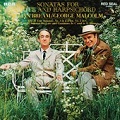
Many waters have flowed (hetera kai hetera hudata epirrei) as
the Greek philosopher Heraclitus phrased it, since the sleeve of this
recording caught my eye and I took the LP home to delight in it, yet
here it is again with that same cover of Julian Bream and George Malcolm
on a garden seat among the cow parsley. Our knowledge of baroque music
has also greatly expanded since 1969 but these performances still sound
fresh and enjoyable.
The short playing time matters little when the price is as low as £3.99.
Johann Sebastian BACH Cantatas for Advent
Bach composed three cantatas for the First Sunday of Advent in Leipzig,
Nos. 36, 61 and 62, and one for Advent IV, No.132, in 1715 – in Leipzig
there were no cantatas to provide relief during the long Hauptgottesdienst between Advent I and Christmas. The recordings on all four complete
recorded cycles are very good – only personal preference need influence
choice. My own listening regularly includes all four.
On the earliest set, from Nikolaus Harnoncourt and Gustav Leonhardt
for Teldec and Hänssler's cycle with Helmut Rilling the cantatas
are presented in numerical order according to the BWV catalogue, which
takes no account of order of composition or attribution to a particular
Sunday or festival.
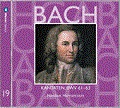 On
CD the Teldec set is now imprisoned in a monster box but it’s
still possible to download individual volumes or sets of volumes very
inexpensively from classicsonline.com* and the USB stick containing
all the Teldec recordings of Bach’s extant works remains available – review:
snap it up soon, stocks are becoming depleted. These pioneering performances
in the use of period instruments and boy trebles can still hold their
own against more recent recordings.
On
CD the Teldec set is now imprisoned in a monster box but it’s
still possible to download individual volumes or sets of volumes very
inexpensively from classicsonline.com* and the USB stick containing
all the Teldec recordings of Bach’s extant works remains available – review:
snap it up soon, stocks are becoming depleted. These pioneering performances
in the use of period instruments and boy trebles can still hold their
own against more recent recordings.
* 35 and 36 here;
61-63 here for £2.99 each. The album with Nos. 131-133 is unavailable separately
as I write but amazon.co.uk have the 6-CD set of 119-137 for £14.59 here.
 Helmut
Rilling on Hänssler is also still well worth hearing and, though
on offer in a multi-CD box, individual discs remain available at lower
mid-price. Many of the individual albums are available for download
from eclassical.com (mp3 and lossless). Nos. 58-61 (CD92.019)
are here.
All are also available from classicsonline.com, though at a price only
a little less than the mid-price CDs, and for streaming from Naxos Music
Library. If I had to jettison one set for my Desert Island, this would
have to be it, but very reluctantly.
Helmut
Rilling on Hänssler is also still well worth hearing and, though
on offer in a multi-CD box, individual discs remain available at lower
mid-price. Many of the individual albums are available for download
from eclassical.com (mp3 and lossless). Nos. 58-61 (CD92.019)
are here.
All are also available from classicsonline.com, though at a price only
a little less than the mid-price CDs, and for streaming from Naxos Music
Library. If I had to jettison one set for my Desert Island, this would
have to be it, but very reluctantly.
John Eliot Gardiner recorded all four of these Advent cantatas,
together with Nos. 70 (Trinity XXVI) and 147 (Visitation) on his pilgrimage:
Soli Deo Gloria SDG162 (2 CDs) [133:40] – from classicsonline.com (mp3, with pdf booklet) or stream from Naxos Music Library. Nos.36,
61 and 62 also remain available in Gardiner’s abortive series for DG
Archiv (E4635882) and all the cantatas which he recorded for
DG, with the Passions, Christmas Oratorio and b-minor Mass can
be downloaded from prestoclassical.co.uk for £39.65 (mp3) or £49.55 (lossless).
 I
recently awarded Recording of the Month status to the
last two recordings in Masaaki Suzuki’s now complete set for BIS and
that accolade stands for the complete series which, I imagine, will
now also appear in box-set format. The only thing which I find a trifle
annoying is the order in which the cantatas are allocated: Volume 47
contains Nos. 36 (Advent I, 1731, after an earlier Birthday Cantata*),
47 (Trinity XVII, 1726) and 27 (Trinity XVI, 1726) – BIS-SACD-1861 [68:16]. Download from eclassical.com (mp3, 16– and 24-bit lossless, with pdf booklet).
I
recently awarded Recording of the Month status to the
last two recordings in Masaaki Suzuki’s now complete set for BIS and
that accolade stands for the complete series which, I imagine, will
now also appear in box-set format. The only thing which I find a trifle
annoying is the order in which the cantatas are allocated: Volume 47
contains Nos. 36 (Advent I, 1731, after an earlier Birthday Cantata*),
47 (Trinity XVII, 1726) and 27 (Trinity XVI, 1726) – BIS-SACD-1861 [68:16]. Download from eclassical.com (mp3, 16– and 24-bit lossless, with pdf booklet).
Volume 7 (BIS-CD-881, from eclassical.com,
mp3 and lossless) is more logically coupled, with Nos. 61 and 132 (both
Advent) accompanying No.63 (Christmas) and, less logically, No.172 (Pentecost).
Volume 28 contains Cantatas 62, 139 (Trinity XXIII), 26 (Trinity XXIV)
and 116 (Trinity XXV) (BIS-SACD-1451, from eclassical.com,
mp3, 16– and 24-bit lossless, unusually at 24/88.2.) All the BIS downloads
come with pdf booklets and all can be streamed from Naxos Music Library.
* Suzuki and his team have recorded the birthday version, BWV36c, on
Volume 3 of their recordings of the secular cantatas (BIS-SACD-2041,
with Nos. 173a and 202 – from emusic.com,
mp3, 16– and 24-bit lossless, with pdf booklet).
Johann Sebastian BACH (1685-1750) Christmas Oratorio – an
afterthought


In 2013/15 I made the new Hyperion release of this work Recording
of the Month. Bargain-hunters who are happy with mp3 only and
don’t require the libretto may well be content with Philippe Herreweghe’s
1989 recording with Collegium Vocale Ghent, formerly on Virgin Classics
and now Erato 5099930300958, a 2-CD set at budget price on disc.
In reviewing the Hyperion I gave a link to a classicsonline.com download
costing £4.99 but there’s an even less expensive download at £3.99
also from classicsonline.com. Be careful to follow this link for the right one – and be aware that
classicsonline.com do vary their prices quite often.
Felix MENDELSSOHN (1809-1847) Chamber Music for Strings 3
String Quartet No.5 in E flat, Op.44/3 [33:21]
Four Pieces for String Quartet, Op.81 [8:33]
Octet in E flat, Op. 20* [32:00]
Mandelring Quartett with *Quartetto di Cremona – rec? (P) and ©
2013.
AUDITE 92.658 [74:00] – from emusic.com (mp3 and lossless, no booklet) or stream from Naxos Music Library
(with back cover)
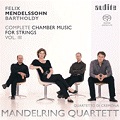 Both
emusic.com and myself, having missed out on earlier volumes, have entered
this series via the side door, as it were. Nor have my MusicWeb International
colleagues reviewed any of the earlier volumes, it seems, though they
have been generally welcomed elsewhere.
Both
emusic.com and myself, having missed out on earlier volumes, have entered
this series via the side door, as it were. Nor have my MusicWeb International
colleagues reviewed any of the earlier volumes, it seems, though they
have been generally welcomed elsewhere.
My only serious reservation about this fine third volume concerns the
inclusion of the Octet – wonderful music, but so popular that
you may well already have one or more very good recordings. Not a problem
if you don’t mind acquiring another fine recording, but bear in mind
the almost-complete set of Mendelssohn’s works for string quartet –
all six numbered works – from the Cherubini Quartet on a budget 3-CD
EMI set – review – and the even more complete Henschel Quartet on Arte Nova – review.
The Arte Nova set is available only as a download, in 320kb/s mp3 from sainsburysentertainment.co.uk:
the CDs are on offer for as much as £109.60 as I write.
Carl Philipp Emanuel BACH (1714-1788)
Orchestra-symphony No.1 in D, Wq.183/1, H663 [11:13]
Orchestra-symphony No.2 in E-flat, Wq.183/2, H664 [10:56]
Cello concerto in A, Wq.172, H439* [20:01]
Orchestra-symphony No.3 in F, Wq.183/3, H665 [10:17]
Orchestra-symphony No.4 in G, Wq.183/4, H666 [11:13]
Alison McGillivray (cello)*
The English Concert/Andrew Manze – rec. March 2006. DDD
Pdf booklet included
HARMONIA MUNDI HMU807403 [64:21] – from eclassical.com (mp3 and lossless) or stream from Naxos Music Library
 I
wonder why we have had to wait so long for this recording to appear.
Far from finding CPE’s music ‘tedious, repetitive and unrewarding,
as one reviewer (not MusicWeb International) has recently written, for
me he’s often quirky and unpredictable but enjoyable. Actually that
reviewer did make an exception for the four Hamburg symphonies of 1775/6,
recorded here, so we can agree on the merits of this programme. As for
the performances, it will be enough for most prospective purchasers
that they are in the capable hands of The English Concert and Andrew
Manze – and they will be right. The Cello Concerto, too, a fairly popular
work as far as recordings go, is delectable and receives a fine performance.
The recording, too, is very good, which brings me back to my original
question.
I
wonder why we have had to wait so long for this recording to appear.
Far from finding CPE’s music ‘tedious, repetitive and unrewarding,
as one reviewer (not MusicWeb International) has recently written, for
me he’s often quirky and unpredictable but enjoyable. Actually that
reviewer did make an exception for the four Hamburg symphonies of 1775/6,
recorded here, so we can agree on the merits of this programme. As for
the performances, it will be enough for most prospective purchasers
that they are in the capable hands of The English Concert and Andrew
Manze – and they will be right. The Cello Concerto, too, a fairly popular
work as far as recordings go, is delectable and receives a fine performance.
The recording, too, is very good, which brings me back to my original
question.
An earlier incarnation of The English Concert with Trevor Pinnock at
the helm won an award with an LP of CPE’s slightly earlier set of six
Hamburg string symphonies, Wq182/1-6, transferred to DG CD 4775000 in 2004 but now available only as a download (mp3 from 7digital.com,
mp3 and lossless from deutschegrammophon.com).
Fréderic CHOPIN (1810-1849) Nocturnes 1-20
Peter Katin (piano) – rec. 1955. ADD/mono
BEULAH 1PD85 [90:36] due for release by iTunes and Amazon (mp3)
 This
set was released on two Decca LPs and most complete recordings of the Nocturnes run to two CDs, albeit often with extra couplings so
the reissue on one album is generous. There are plenty of fine vintage
and modern recordings – Rubinstein (RCA or Naxos Historical, not including
the Op. posth.; Katin includes one of these) and Hewitt (Hyperion, with Impromptus) to name one of each – but Peter Katin’s interpretations
equal the best of them in making music to which I don’t listen very
often sound attractive.
This
set was released on two Decca LPs and most complete recordings of the Nocturnes run to two CDs, albeit often with extra couplings so
the reissue on one album is generous. There are plenty of fine vintage
and modern recordings – Rubinstein (RCA or Naxos Historical, not including
the Op. posth.; Katin includes one of these) and Hewitt (Hyperion, with Impromptus) to name one of each – but Peter Katin’s interpretations
equal the best of them in making music to which I don’t listen very
often sound attractive.
The recording has transferred well: the piano tone is secure and there
is only a very occasional reminder of LP surface blemish. The original
review of Nos.11-20 mentioned a slight degree of tonal insecurity but
I heard no trace of that on the Beulah transfer; if iTunes in m4a and
Amazon in mp3 can match the .wav transfers which I received for review
there should be no problems in that regard.
Johannes BRAHMS (1833-1897)
Piano Concerto No.1 in d minor, Op.15 [49:02]
Piano Concerto No.2 in B-flat, Op.83 [48:51]
Stephen Hough (piano)
Salzburg Mozarteum Orchestra/Mark Wigglesworth – rec. January 2013.
DDD.
Pdf booklet included
HYPERION CDA67961 [2 CDs for the price of one: 49:02 + 48:51]
– from hyperion-records.co.uk (mp3, 16– and 24-bit lossless)
 It
was very thoughtless of Brahms to make each of his piano concertos short
value on CD but too long to pair them on one disc. The Gilels set, in
all other respects my benchmark for these works on DG, adds seven short Fantasias but I for one don’t want to hear such small beer after
the concertos. Hyperion’s 2-for-1 offer seems to offer a very reasonable
solution to the problem, making the mp3 and 16-bit lossless at £7.99
less expensive than any download of the Gilels pair that I can find
and even the 24-bit at £12 only one penny more than that Gilels
download.
It
was very thoughtless of Brahms to make each of his piano concertos short
value on CD but too long to pair them on one disc. The Gilels set, in
all other respects my benchmark for these works on DG, adds seven short Fantasias but I for one don’t want to hear such small beer after
the concertos. Hyperion’s 2-for-1 offer seems to offer a very reasonable
solution to the problem, making the mp3 and 16-bit lossless at £7.99
less expensive than any download of the Gilels pair that I can find
and even the 24-bit at £12 only one penny more than that Gilels
download.
I wondered if the Mozarteum Orchestra, which I associate more with the
music of their eponymous composer, could produce the power to match
those Gilels/Jochum recordings or earlier exponents of this music such
as Curzon (Decca, mono and stereo, with Szell and Knappertsbusch) and
Serkin (CBS, with Szell and Ormandy – you even got a reproduction of
a Great Masters painting with the Fontana mono reissues) at whose hands
I learned to love these concertos. I need not have worried; there’s
plenty of power here to the extent that I wondered at times whether
Brahms the romantic was not in danger of shutting out Brahms the classicist.
It’s Stephen Hough who best manages to combine those two elements and
it’s chiefly because of his contribution that I considered this for
Recording of the Month status.
The recording conveys both the power and the delicacy of the different
strands of the music, especially in 24-bit form. As usual, I also tried
the mp3 and that is more than acceptable.
Recording of the Month: Back Catalogue
 Engelbert
HUMPERDINCK (1854-1922)
Engelbert
HUMPERDINCK (1854-1922)
Hansel and Gretel (in English, translated David Pountney)
Hansel – Jennifer Larmore (mezzo)
Gretel, his sister – Rebecca Evans (soprano)
Gertrude, their Mother – Rosalind Plowright (mezzo)
Peter, their Father – Robert Hayward (baritone)
The Witch – Jane Henschel (mezzo)
The Dew Fairy – Sarah Tynan (soprano)
The Sandman – Diana Montague (mezzo)
The Cuckoo – Sarah Coppen
New London Children’s Choir
Philharmonia Orchestra/Sir Charles Mackerras
Pdf booklet with libretto available
CHANDOS CHAN3143(2) [58:47 + 42:17] – from theclassicalshop.net (mp3 and lossless) or stream from Naxos Music Library
 I’m
not sure how Hänsel und Gretel came to be regarded as suitable
for children at Christmas – as in pantomime all ends happily, but only
by a narrow margin and after some pretty culpable child abuse. Humperdinck
may smooth some of the nastiness out – in the original Grimm story,
the parents deliberately get the children lost in forest so as not to
have to feed them – but it’s still X-rated stuff.
I’m
not sure how Hänsel und Gretel came to be regarded as suitable
for children at Christmas – as in pantomime all ends happily, but only
by a narrow margin and after some pretty culpable child abuse. Humperdinck
may smooth some of the nastiness out – in the original Grimm story,
the parents deliberately get the children lost in forest so as not to
have to feed them – but it’s still X-rated stuff.
The version to have is still Karajan’s 1953 classic mono
recording (EMI, now Warner, Naxos or Past Classics – December
2011/2 DL Roundup) but those who want a more recent version in English
will hardly be disappointed with this Mackerras recording. There are
no weak parts but it’s Mackerras’s place at the helm above all that
guarantees success. The recording is very acceptable in mp3 and better
still in lossless sound.
Bargain of the Month
 Richard
STRAUSS (1864-1949) Die Frau ohne Schatten, Op.65, TrV234
(1917)
Richard
STRAUSS (1864-1949) Die Frau ohne Schatten, Op.65, TrV234
(1917)
Hans Hopf (Kaiser), Leonie Rysanek (Kaiserin), Ludwig Weber (Barak),
Elisabeth Hoengen (Dyer’s Wife), Judith Hellwig (Stimme des Falken),
Murray Dickie (Bucklige), Alfred Poell (Wächter der Stadt), Eberhard
Wachter (Wächter der Stadt), Karl Terkal (Erscheinung eines Jünglings),
Kurt Bohme (Geisterbote), Oscar Czerwenka (Einarmige), Hilde Rossel-Majdan
(Stimme von Oben), Harald Proglhof (Einäugige), Ljubomir Pantscheff
(Wächter der Stadt), Emmy Loose (Ein Hüter der Schwelle des
Tempels)
Vienna State Opera Chorus and Orchestra/Karl Böhm – rec. 1955.
ADD/mono
NAXOS CLASSICAL ARCHIVES 9.81159/61 [3CDs: 66:37 + 66:20 + 64:19]
– from classicsonline.com (mp3) or stream from Naxos Music Library
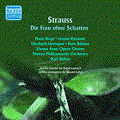 This
1955 Decca recording, made concurrently with a production at the Vienna
State Opera, is not ideal, though there are some respects, not least
the conductor’s sure hand at the tiller, in which it is preferable to
more recent recordings: Böhm recorded the work again, live, for
DG in 1977 and Solti, from the Salzburg Festival, for Decca in 1992.
Some vocal shortcomings apart, this is an incredibly inexpensive way
to get to know this longest and most complex of Strauss’s operas, a
work often compared, with justice, to Wagner. It’s just £5.97
from classicsonline.com in top bit-rate mp3; even less and still sounding
tolerable from emusic.com at just £1.26 if you are prepared to
put up with a lower bit-rate (144kb/s – I thought the days of such low
bit-rates were long past).
This
1955 Decca recording, made concurrently with a production at the Vienna
State Opera, is not ideal, though there are some respects, not least
the conductor’s sure hand at the tiller, in which it is preferable to
more recent recordings: Böhm recorded the work again, live, for
DG in 1977 and Solti, from the Salzburg Festival, for Decca in 1992.
Some vocal shortcomings apart, this is an incredibly inexpensive way
to get to know this longest and most complex of Strauss’s operas, a
work often compared, with justice, to Wagner. It’s just £5.97
from classicsonline.com in top bit-rate mp3; even less and still sounding
tolerable from emusic.com at just £1.26 if you are prepared to
put up with a lower bit-rate (144kb/s – I thought the days of such low
bit-rates were long past).
The recording has been reissued a number of times on LP and CD in stereo
– no longer available, with one hopeful seller offering it for £124
on Amazon – but this Naxos transfer sounds resolutely mono, though otherwise
it has come up amazingly well.
Ralph VAUGHAN WILLIAMS (1872-1958) On Wenlock Edge (1907)
[21:17]
Ten Blake Songs (1957) [18:42]
Jonathan DOVE (b. 1959) The End (2012) [8:53]
Peter WARLOCK (1894-1930) The Curlew (1920-22) [23:20]
Mark Padmore (tenor); Nicholas Daniel (oboe/cor anglais); Huw Watkins
(piano)
Members of Britten Sinfonia/Jacqueline Shave – rec. May 2012. DDD/DSD
English texts and French translations included
HARMONIA MUNDI HMU807566 [72:35] – from eclassical.com (mp3, 16– and 24-bit lossless)
 VW’s
bitter-sweet Housman-texted melancholia in Wenlock Edge is here
very appropriately coupled with Warlock’s slightly more bitter/less
sweet Curlew. Mark Padmore’s singing, very well supported by
the instrumentalists and recording engineers, fully deserves the Recording
of the Month accolade which John Quinn awarded – review – though I should warn potential purchasers that drama is paramount
throughout in a manner that you may think exaggerated, to the extent
that some words are almost inaudible and others are rendered almost
in the manner of Sprechstimme. If pressed to make a choice, I
prefer Padmore’s manner to that of Ian Partridge on the classic EMI
recording from which I got to know On Wenlock Edge after having
previously fought shy of the work on the basis of an (Argo RG20?) recording
which an undergraduate friend had tried to convert me to. I think Mark
Padmore would have dome a much better job of convincing me.
VW’s
bitter-sweet Housman-texted melancholia in Wenlock Edge is here
very appropriately coupled with Warlock’s slightly more bitter/less
sweet Curlew. Mark Padmore’s singing, very well supported by
the instrumentalists and recording engineers, fully deserves the Recording
of the Month accolade which John Quinn awarded – review – though I should warn potential purchasers that drama is paramount
throughout in a manner that you may think exaggerated, to the extent
that some words are almost inaudible and others are rendered almost
in the manner of Sprechstimme. If pressed to make a choice, I
prefer Padmore’s manner to that of Ian Partridge on the classic EMI
recording from which I got to know On Wenlock Edge after having
previously fought shy of the work on the basis of an (Argo RG20?) recording
which an undergraduate friend had tried to convert me to. I think Mark
Padmore would have dome a much better job of convincing me.
The coupling on Harmonia Mundi is more logical than that with the instrumental
works on Mark Padmore’s earlier Chandos recording with the Schubert
Ensemble (CHAN10465 – download
review), though that is very fine, too.
For another very fine recording of Wenlock Edge and The Curlew there’s James Gilchrist with the Fitzwilliam Quartet (Linn CKD296);
you may prefer the coupling of Ivor Gurney’s Ludlow and Teme,
also settings of Housman texts. Bargain-lovers will hardly go far amiss
with another Wenlock Edge/Ludlow and Teme coupling on
Hyperion Helios CDH55187 (Adrian Thompson, the Delmé Quartet and Ian Burnside, with Stephen
Varcoe in Gurney’s Western Playland). Finally, at the risk of
spoiling you with choice, there’s a Signum recording which I like, which
couples Wenlock Edge and Ludlow and Teme with music by
Ian Venables (b.1955) (SIGCD112 – download
review). You can compare all except the Hyperion via Naxos Music
Library.
E.J. MOERAN (1894 – 1950)
Concerto for Violin and Orchestra (1937-42) [32:52]
Frederick DELIUS (1862 – 1934)
Légende, for Violin and Orchestra (c. 1892-95) [8:09]
Gustav HOLST (1874 – 1934)
A Song of the Night for Violin and Orchestra, Op. 19/1, H 74
(1905) [8:33]
Sir Edward ELGAR (1857 – 1934)
Chanson de matin, Op. 15/2 (1899) [3:02]
Chanson de nuit, Op. 15/1 (1897 – 99) [3:42]
Salut d’amour, Op. 12 (1888) [3:13
(Premiere recordings in this arrangement)
Ralph VAUGHAN WILLIAMS (1872 – 1958)
The Lark Ascending, Romance for Violin and Orchestra (1914, revised
1920) [15:33]
Tasmin Little (violin)
BBC Philharmonic/Sir Andrew Davis
Pdf booklet available
CHANDOS CHAN10796 [75:45] – from theclassicalshop.net (mp3, 16– and 24-bit lossless)
 With The Lark Ascending regularly featuring high on the Classic FM
popularity chart, it’s not surprising that the final work on this recording
gives its name to the whole album. Nor will it surprise me if that makes
it a best-seller, though I’m hard put to know why the work is so popular;
it’s by no means VW’s best music or even, for my money, anywhere near
as appealing as the Tallis Fantasia. Full marks to Chandos and
the performers, then, for not filling the rest of the programme with
pop classics.
With The Lark Ascending regularly featuring high on the Classic FM
popularity chart, it’s not surprising that the final work on this recording
gives its name to the whole album. Nor will it surprise me if that makes
it a best-seller, though I’m hard put to know why the work is so popular;
it’s by no means VW’s best music or even, for my money, anywhere near
as appealing as the Tallis Fantasia. Full marks to Chandos and
the performers, then, for not filling the rest of the programme with
pop classics.
We weren’t short of good recordings of the Moeran Violin Concerto –
Chandos are competing against their own version with Lydia Mordkovich
as soloist on CHAN10168X at lower-mid price, with the Cello Concerto and Lonely Waters and there’s a very fine Lyrita recording with John Georgiadis as soloist
on SRCD.248, with Rhapsody for piano and orchestra and Rhapsody No.2 – review and review.
It’s a very close call which of these I would choose for my Desert Island,
so price, coupling and recording quality can safely be your deciding
factors. There are even two historic versions on Divine Art (27806,
Campoli, with Douglas Coates’ Violin Concerto - review)
and Symposium (SYMPCD1201, Sammons, with Fantasy Quartet and Serenade in G - review).
You can sample both Chandos recordings from Naxos Music Library but
that won’t give you an idea of the excellence of the 24/96 version of
the new recording, with the Mordkovich available only in (good) mp3
and 16-bit lossless and the Lyrita only in mp3, but very good value
at £2.10 from emusic.com.
Recording quality wouldn’t be my only reason for plumping for the new
recording – Tasmin Little and Andrew Davis seem to me to bring out both
the rhapsodic aspects of the music and its power just a little more
than the opposition.
Chandos are also competing against themselves in the two Elgar Chansons,
this time with their own recording of Nigel Kennedy plays Elgar, on
which he teamed up early in his career with Peter Pettinger (piano)
(CHAN8380),
an attractive collection but I think most will prefer the orchestrations
on the new CD. These and the Delius and Holst works are attractive makeweights
and The Lark Ascending, for all my amazement that it’s so popular,
is well done. Another winner, then, from a team which has brought so
many fine recordings of English music in the recent past.
Romantic Piano Trios
William HURLSTONE (1874-1906) Piano Trio in G, Op. posth. (1905)
[29:28]
Miriam HYDE (1913-2003) Fantasy-Trio in b minor, Op.10 (1933)
[9:00]
Maximilien Paul Marie Félix (Max) D’OLLONE (1875-1959) Piano Trio in a minor (1920) [29:06]
Dag WIREN (1905-1986) Piano Trio No.1, Op.6 (1932) [15:55]
Trio Anima Mundi Ensemble – rec.? (P) 2013. DDD.
Pdf booklet available
DIVINE ART DDA25102 [38:35 + 45:11 = 83:29] – from theclassicalshop.net (mp3 and lossless) or stream from Naxos Music Library
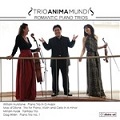 Slightly
too long for one CD, these works have been fitted on two discs, which,
totally illogically, means that while the CDs are available at a special
price of around £12 from one online dealer, the same people will
charge you £16 for the mp3 download and £20 for the CD-quality
lossless. Similarly, theclassicalshop.net, from whom I obtained the
download, charge an uncompetitive £14.70 and £18.90 respectively.
With amazon.co.uk the gap is even larger: CD for £9.34 and they
will also rip the mp3 for you, mp3 download £14.98. That’s unless
someone has seen some sense by the time that you read this review, as classicsonline.com have done by charging as for one disc, £7.99, your best bet as
I write for mp3 only. Would that everyone took a leaf from eclassical.com’s
per second charging policy, or hyperion-records.co.uk’s of charging
less for short recordings.
Slightly
too long for one CD, these works have been fitted on two discs, which,
totally illogically, means that while the CDs are available at a special
price of around £12 from one online dealer, the same people will
charge you £16 for the mp3 download and £20 for the CD-quality
lossless. Similarly, theclassicalshop.net, from whom I obtained the
download, charge an uncompetitive £14.70 and £18.90 respectively.
With amazon.co.uk the gap is even larger: CD for £9.34 and they
will also rip the mp3 for you, mp3 download £14.98. That’s unless
someone has seen some sense by the time that you read this review, as classicsonline.com have done by charging as for one disc, £7.99, your best bet as
I write for mp3 only. Would that everyone took a leaf from eclassical.com’s
per second charging policy, or hyperion-records.co.uk’s of charging
less for short recordings.
Beef over, let me turn to the music. There are no undiscovered masterpieces
here but plenty of the sort of often impassioned late romantic chamber
music that I must admit to being very fond of.
Performances and recording are very good, but I leave you to decide
if it’s worth paying more for the lossless download than for the CDs
and much more than the classicsonline.com mp3. Try listening via Naxos
Music Library; I did and though the sound is noticeably inferior to
theclassicalshop.com’s lossless, it sounds decent enough to make me
think that the classicsonline.com mp3 will be acceptable to most.
I’m particularly partial to the Hurlstone by whom Lyrita have done well
in performances by the LPO and Nicholas Braithwaite (SRCD.208 and SRCD.2286 – review);
the Piano Trio (Tunnell Piano Trio) accompanies his Piano Concerto and
Piano Quartet on the latter. There’s also a good recording of his Piano
Quartet on Meridian (CDE84519 – DL
News 2013/8).
If it’s principally the Hurlstone Trio that you are after and you don’t
have SRCD.2286, I’d recommend going for that. It’s available
very inexpensively, for £5.04 from emusic.com or for £8.49
for those who are not emusic.com members from 7music.com,
in both cases in mp3 only, at the full 320kbs from the latter but only
at around a barely acceptable 180kbs from the former.
Trio Anima Mundi are really not far behind, however, and the Hurlstone
Trio is only part of the story, however, as far as the Divine Art recording
is concerned. The other works are also well worth hearing and they,
too, receive very good performances to the extent that David Barker,
noting that I’d downloaded this recording, tried it and made it a last-minute
entrant to his Recordings of the Year choices. Add John
France’s review and that’s a sizeable chunk of the MusicWeb International team in favour
of the new recording.
Jean SIBELIUS (1865-1957)
Symphony No. 1 in e minor, Op. 39 (1898) [34:43]
Symphony No. 4 in a minor, Op. 63 (1910-11) [38:28]
Minnesota Orchestra/Osmo Vänskä – rec. May/June 2012. DDD/DSD
Pdf booklet included
BIS-SACD-1996 [74:10] – from eclassical.com (mp3, 16– and 24-bit lossless)
(See also review by Dan Morgan and 2013/4
DL News)
 The
first movement of Symphony No.1 begins with a beautifully played clarinet
solo although at first the timpani roll is barely audible. Also I think
that the conclusion of this solo is far too soft unless you are prepared
to adjust your volume settings for the later very loud passages. This
is certainly a very exciting performance of the first movement, but
for my taste much too fast and rather glib. Vänskä takes two
minutes less in this movement than Sir Colin Davis, whose recording
with the London Symphony Orchestra (RCA Victor Red Seal) allows the
music breathing space. Vänskä’s excessive speed seems particularly
noticeable and hurried in the passages where there is fast rhythmic
configuration. After all it is marked to be played Andante, ma non
troppo.
The
first movement of Symphony No.1 begins with a beautifully played clarinet
solo although at first the timpani roll is barely audible. Also I think
that the conclusion of this solo is far too soft unless you are prepared
to adjust your volume settings for the later very loud passages. This
is certainly a very exciting performance of the first movement, but
for my taste much too fast and rather glib. Vänskä takes two
minutes less in this movement than Sir Colin Davis, whose recording
with the London Symphony Orchestra (RCA Victor Red Seal) allows the
music breathing space. Vänskä’s excessive speed seems particularly
noticeable and hurried in the passages where there is fast rhythmic
configuration. After all it is marked to be played Andante, ma non
troppo.
Similarly I find that Davis captures the mood of the second movement
perfectly and again Vänskä seems just that bit too fast at
the start. In fact Vänskä takes all four movements faster
than Davis. Vänskä comes into his own with Movement 3 Allegro-Lento which is very lively and the recording is crystal clear. The orchestra
soloists are able to demonstrate their virtuosity at high speed here
and the wind players display some lovely tone in the Lento.
Vänskä sets a high tension for the arresting opening of Movement
4 very well. I was beginning to get used to the faster tempo but on
listening to Davis again I still find his more measured approach preferable.
But Vänskä is very successful in the romantic ‘big’ tune
and the passion here seems very sincerely felt. The fast sections are
always colourful and virtuosically played, with great clarity between
the sections and instruments of the well-balanced orchestral sound.
However I feel that Sir Colin Davis’s interpretation is more successful.
Also his orchestra is richer sounding and more full-bodied, less lean
and dry than Vänskä’s Minnesota performance, and I feel that
the Davis approach is more appropriate for this late Romantic Symphony.
With the Fourth Symphony we move into another world, far away from the
Romanticism of Tchaikovsky and others into something tragic and intense
and totally new. Seeming to deliberately move away from influences from
the past but also to eschew the new modernism of Stravinsky and Schoenberg,
Sibelius has found in Osmo Vänskä a fine interpreter in this
dark and brooding music.
Sibelius said that the opening motif is ‘as harsh as Fate’. Vänskä
sets the mood perfectly and gives a deeply compelling performance of
the First Movement. I was surprised that he was slower than Colin Davis,
Herbert Von Karajan and Sir Malcolm Sargent. Karajan’s Berlin Philharmonic
sounds really lush and quite resonant and it was refreshing to hear
Vänskä’s leaner sound. Sir Colin Davis is mellower at the
start but builds his climaxes magnificently – a very fine account. Vänskä
gives a fine, clearly articulated performance of the fast and fleeting
Second Movement, Allegro molto vivace, and the Fourth Movement
is well played, with the virtuosity of the orchestra demonstrated to
good effect. The ensemble of the strings in fast passages is admirable
and the wind soloists are excellent. Once again there are some very
soft passages which are virtually inaudible unless you adjust the volume
levels but this is just a minor niggle.
There is much to admire and enjoy in Vänskä’s performance
of these two symphonies of Sibelius, particularly the Fourth. The same
symphonies are paired on one disc in Colin Davis’ cycle on RCA and if
I had to choose between the two, Davis would be my first choice. Personally
I do not find any problem with the Barbican acoustics on this recording.
Karajan’s account used to be my benchmark for the Fourth Symphony, and
it is undoubtedly a masterful performance. Particularly effective and
dramatic is the Finale, but nowadays it sounds bit bloated and resonant
for modern tastes, particularly compared with for example Vänskä.
One of Sir Malcolm Sargent’s finest performances is of this Symphony,
recorded with the BBC Symphony Orchestra from the Proms in 1965 on BBC
Legends. The sound is very good, very few coughs from the audience and
a minimum of hiss, and it is combined with an equally magnificent Vaughan
Williams Fourth.
Geoffrey Molyneux
Bela BARTÓK (1881-1945)
The Miraculous Mandarin – Suite, Op.19, BB82 (1927) [19:08]
Music for strings, percussion and celesta, BB114 (1936) [31:01]
Four orchestral pieces, Op.12, BB64 (1912/1921) [22:48]
Melbourne Symphony Orchestra/Edward Gardner – rec. July 2011, March
2013. DDD/DSD
pdf booklet available
CHANDOS CHAN5130 [72:33] – from theclassicalshop.net (mp3, 16– and 24-bit lossless and Studio Surround sound)
(also available as SACD, CHSA5130)
 The
bar is set very high by my benchmark recordings of these works, principally
Fritz Reiner (RCA: his Music for strings, percussion and celesta is imprisoned in a monster box, though still available separately with Concerto for orchestra and Hungarian Sketches as an inexpensive
download from amazon.co.uk)
and Georg Solti (Decca, in London and Chicago).
The
bar is set very high by my benchmark recordings of these works, principally
Fritz Reiner (RCA: his Music for strings, percussion and celesta is imprisoned in a monster box, though still available separately with Concerto for orchestra and Hungarian Sketches as an inexpensive
download from amazon.co.uk)
and Georg Solti (Decca, in London and Chicago).
I wondered at first if Edward Gardner and his Melbourne players could
equal those benchmarks and, though the Miraculous Mandarin Suite
is so well characterised that I’d have liked the whole ballet*, at first
I thought they were missing both the mystery and power of Music for
strings, percussion and celesta, but they were only biding their
time.
The Four pieces are rarer beasts, especially in orchestral form,
and not on a par with the other music, but Gardner and his team make
them worth hearing.
Without quite challenging Reiner and Solti at the very top of the tree,
this newcomer makes a very good alternative, especially if you’re looking
for 24/96 surround sound from the top-level download (£19.99)
or the SACD.
* for that you need to seek out Iván Fischer – various couplings
on Philips but available to download only from 7digital.com or prestoclassical.co.uk.
Benjamin BRITTEN (1913-1976)
Concerto for Violin in d minor, Op.15 (1938-1939) [32:38]
Four Sea Interludes from Peter Grimes, Op.33a (1944) [16:31]
Matthew Trusler (violin)
Symfonieorkest Vlaanderen (Flanders Symphony Orchestra)/Seikyo Kim (concerto);
Jan Latham-Koenig (interludes) – rec October 2012 (concerto); live,
June 2013 (interludes). DDD
Pdf booklet included
ORCHID CLASSICS 100037 [49:27] – from eclassical.com (mp3 and lossless)
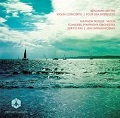 Britten’s
music is certainly not the sole preserve of British composers, as the
recent BIS recording of his orchestral music (2013/16) has demonstrated,
but competition is especially fierce in these two works. The list of
good recordings of the Sea Interludes is too long to itemise
and four recordings of the Violin Concerto are especially hard
to beat or even equal:
Britten’s
music is certainly not the sole preserve of British composers, as the
recent BIS recording of his orchestral music (2013/16) has demonstrated,
but competition is especially fierce in these two works. The list of
good recordings of the Sea Interludes is too long to itemise
and four recordings of the Violin Concerto are especially hard
to beat or even equal:
• Decca E4173082: Mark Lubotsky and Benjamin Britten (with
Piano Concerto – Sviatoslav Richter). Still my benchmark recording.
Download from 7digital.com
• Naxos 8.557198: Lorraine McAslan and Steuart Bedford (with Canadian Carnival Overture and Mont Juic). Ex-Collins
Classics, this CD is out of stock at present but can be downloaded from classicsonline.com (mp3, with booklet) or streamed from Naxos Music Library.
• Hyperion CDA67801: Anthony Marwood and Ilan Volkov (with
Double Concerto and Lachrymæ) – Recording of the
Month – review: DL
News February 2012/1
• Chandos CHAN10764: Tasmin Little and Edward Gardner (with
Piano Concerto) – review and Recording of the Month in DL
News 2013/6
Nick Barnard found the most recent recording – Onyx ONYX4113:
James Ehnes and Kirill Karabits (with Shostakovich) – something of a
disappointment, though I was more impressed – DL
News 2013/10.
The new Orchid recording needs a volume boost to deliver the full power
of the performance – until I turned it up a notch or two I was beginning
to think it not much more than an efficient run-through and there are
still moments in the second movement when it failed to grab my attention
fully, but then everything came right again at the start of the third,
a performance of power here where it’s required and the end of the movement
is suitably soulful. On the whole, though I enjoyed this recording of
the concert overall, it doesn’t offer a serious challenge to the four
versions that I’ve listed.
The Sea Interludes follow much too hard on the heels of the concerto,
allowing very little time to emerge from the near-meditational state
which that ending encourages. A different conductor, one with a professed
long-term love of Britten and recorded live, with well-deserved applause,
brings a more idiomatic Britten style. You would hardly be likely to
buy the recording for these works alone, however, so the album as a
whole remains a creditable runner-up for me.
The short playing time need not worry purchasers – it’s taken into account
in the selling price of $8.85.
Benjamin BRITTEN (1913-1976)
 Jubilate
Deo in E flat [2:38]
Jubilate
Deo in E flat [2:38]
Te Deum in C [8:36]
Antiphon, Op.56b [6:04]
Missa Brevis in D, Op.63 [10:19]
A Wedding Anthem, Op.46 [9:45]
Sweet the Song [2:59]
A Ceremony of Carols, Op.28 [21:48 ]
Festival Te Deum, Op.32 [6:35]
Jubilate Deo, in C [2:32]
Susan Drake (harp)
Finzi Singers/Paul Spicer – rec.1997. DDD
Pdf booklet with texts available
CHANDOS CHAN9598 [71:00] – from theclassicalshop.net (mp3 and lossless)
(Also included in The Britten Choral Edition, 3 CDs, CHAN10771(3)X at mid price.)
Benjamin BRITTEN
 A
Ceremony of Carols, Op. 28 [23:51]
A
Ceremony of Carols, Op. 28 [23:51]
Missa Brevis in D, Op. 63 [10:50]
A Hymn to the Virgin for double choir [3:32]
A Hymn of Saint Columba for choir and organ [2:07]
Deus in adjutorium meum (Psalm 70) [6:15]
Jubilate Deo in E flat (1934) [2:35]
James O’Donnell (organ), Sioned Williams (harp)
Choir of Westminster Cathedral/David Hill – rec. January 1987. DDD.
pdf booklet with texts included
HYPERION CDA66220 [49:10] – from hyperion-records.co.uk (mp3 and lossless)

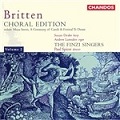 With
two major works, the Ceremony and Missa Brevis, in common,
there is strong competition here. There are many other very worthwhile
recordings of the Ceremony, including that from The Sixteen which
I mentioned last month, and a more recent one from Hyperion, with Saint
Nicolas (CDA67946),
but the two listed here have slipped through my Christmas-tide net in
the past and deserve to have that oversight put right. Both combine
very good performances and recording with the availability of a pdf
booklet. Otherwise the choice is clear: boys’ voices on Hyperion, an
all-Britten programme on both the Hyperion CDs and the Chandos against
a Christmas-themed programme on Coro.
With
two major works, the Ceremony and Missa Brevis, in common,
there is strong competition here. There are many other very worthwhile
recordings of the Ceremony, including that from The Sixteen which
I mentioned last month, and a more recent one from Hyperion, with Saint
Nicolas (CDA67946),
but the two listed here have slipped through my Christmas-tide net in
the past and deserve to have that oversight put right. Both combine
very good performances and recording with the availability of a pdf
booklet. Otherwise the choice is clear: boys’ voices on Hyperion, an
all-Britten programme on both the Hyperion CDs and the Chandos against
a Christmas-themed programme on Coro.
The short playing time of the Hyperion is taken care of by the price
– £5.99 in mp3 or lossless, as against £7.99 and £9.99
respectively for the Chandos.
Freebie of the Month
Marjan MOZETICH (b.1948) Violin Concerto ‘Affairs of the Heart’*
[23:26]
Elena LANGER (b.1974) Platch (for violin and strings,
premiere recording) [16:05]
Alfred SCHNITTKE (1934-1998) Konzert zu drei (Concerto
for 3, for violin, viola, cello and chamber orchestra) [21:38]
Ed BENNETT (b.1975) Sometimes it rains [7:38]
Roman Mints (violin); Kristine Blaumane (cello); Maxim Rysanov (viola)
New Prague Sinfonia*; West Kazakhstan Symphony Orchestra/Mikel Toms
– rec. 2005. DDD
Pdf booklet available
QUARTZ QTZ2052 [68:47] – from theclassicalshop.net (mp3 and lossless) or stream from Naxos Music Library
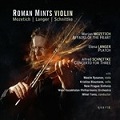
This is the latest free mp3 download for subscribers to theclassicalshop.net’s
monthly newsletter. It’s not music that I’d normally be reviewing but
I found it hugely enjoyable, especially the ethereally beautiful Mozetich
and the powerfully plangent Langer – and what have you got to lose by
signing up to a free newsletter? Roman Mints’ name is prominent on the
cover and it’s something of a showcase for him. The mp3 is very good
but I imagine it’s worth paying a little more for the lossless version.
Sometimes it rains is a bonus track, from another Quartz recording, Game Over, QTZ2010 – that really is outside my comfort
zone.
John PITTS (b.1976) Piano Music
Changes for 20 nifty fingers* [3:04]
Toccata [9:41]
Airs and Fantasias [65:05]
Bonus Download Track: Are you going? for piano triet*/** [4’44]
Steven Kings (piano) with John Pitts* and Daniella Acker** (piano) –
rec. August 2008. DDD
1EQUALMUSIC 1EMIPM08 [82:34] – from hyperion-records.co.uk (mp3 and lossless)
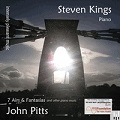 The
first piece in this intriguing collection is entitled Changes for
20 nifty fingers and starting simply in typical minimalistic style
with a small but rhythmic melodic figure, the music becomes ever more
complex, building to an exciting climax. This very difficult music is
superbly played by Steven Kings who is joined in this piece by the composer.
The
first piece in this intriguing collection is entitled Changes for
20 nifty fingers and starting simply in typical minimalistic style
with a small but rhythmic melodic figure, the music becomes ever more
complex, building to an exciting climax. This very difficult music is
superbly played by Steven Kings who is joined in this piece by the composer.
Toccata is a substantial, very modern-sounding piece characterised
with Bartókian aggressiveness, Messiaen-like colours and rhythms
and even Boulezian discord at times. Mostly ferocious in mood, even
quieter passages are punctuated with stabbing single accented notes
and dissonant chord clusters. In one moto perpetuo section there
seems to be a reference to the last of Ginastera’s Three Argentinian
Dances. But the piece has its own distinctive character and shape
and I feel it is one of the more interesting pieces on this recording.
It is played superbly with great clarity, variety of attack and articulation
by Steven Kings.
Then follow the Seven Airs and Fantasias in a different mood
altogether. These pieces are described in the programme notes as ‘intensely
pleasant’, something you could not say about the foregoing music. I
have never been a fan of minimalism, so much being tedious in the extreme,
but these pieces are mostly short enough to maintain the interest as
each has its own mood and musical ideas. The brevity of the pieces here
helps us in to enjoy the colour achieved in the composer’s use of the
vast tonal range and registers of the piano, for example in Clockwork
5/4. Fantasia 2 for prepared piano is fascinatingly and beautifully
coloured. The fast and furious figuration builds to a grand climax when
Westminster Chimes is heard, using the unprepared lower register of
the keyboard. The kaleidoscope of colours in this extraordinary piece
is very affecting and it provides a real contrast with the rest of the
cycle.
I did find Parallel Octaves a little tedious with its constant
if varied repetition, but Sarabande has an attractive melodic
line and the music moves forward to a climax before returning to the
simpler style of the opening. Fantasia 4: Wind Chimes is an evocative
and immediately accessible piece and it seems like the central lynch
pin of the Seven Airs and Fantasias. It is the most substantial
piece of the set but maybe it takes a touch too long to reach its grand
climax. The listener’s interest is mostly maintained though, especially
when it is as well played as it is here by Steven Kings.
After this drama maybe we need some time to reflect and in the next
piece, entitled Calmly contented we have permission to relax
for a while. Cantabile mist is also very calming and is indeed
very pleasant and easy on the ear. The final Fantasia of the
set All in a chord is attractive with the chord’s constantly
changing notes and dynamics. Eventually a simple melody is heard in
various registers of the piano and this piece forms a fine conclusion
to the cycle.
I should add that some of the pieces could well be used for pedagogical
purposes and they could be of interest to students of an intermediate
to advanced standard.
The final piece Are you going makes for a grand climax to this
recording. It is an amazingly complex and virtuosic tour de force for
three pianists, in which the melody Scarborough Fair is pulled rhythmically
around and surrounded by all manner of glittering colours. It must have
taken much rehearsal to achieve the immaculate ensemble we can enjoy
here, so congratulations to all three players.
Are you going for piano triet brings this fine recording of interesting
and evocative music to an exciting conclusion. As usual with Hyperion
it is well recorded and it is all well worth listening to.
Geoffrey Molyneux
Kalevi AHO (b. 1949)
Minea (Concertante Music for Orchestra) (2008) [18:59]
Concerto for Double Bass and Orchestra (2005)* [28:14]
Symphony No.15 (2009-2010) [30:08]
*Eero Munter (double bass)
Lahti Symphony Orchestra/Osmo Vänskä (Minea); Jaakko Kuusisto
(concerto); Dima Slobodeniouk (symphony)
rec. Sibelius Hall. Lahti, Finland, February 2011 (Minea), May 2010
(concerto) & May 2011 (symphony)
Pdf booklet included
BIS-SACD-1866 [78:19] – from eclassical.com (mp3, 16– & 24-bit lossless)
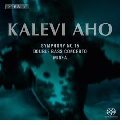 A
new recording from the long-running Aho/BIS partnership is always an
event. Among recent instalments is a collection of the composer’s organ
works (review)
and pieces for oboe (review),
both of which confirm the well of inspiration hasn’t run dry. Some of
my colleagues struggle to find an entrée to Aho’s eclectic œuvre,
but for others the attraction is immediate and sustained; perhaps embarking
on a detailed survey of this music helps one get a better grasp of the composer’s goals and
idiom. In any event I’ve yet to be disappointed by Aho’s steady output,
which always strikes me as fresh and inventive.
A
new recording from the long-running Aho/BIS partnership is always an
event. Among recent instalments is a collection of the composer’s organ
works (review)
and pieces for oboe (review),
both of which confirm the well of inspiration hasn’t run dry. Some of
my colleagues struggle to find an entrée to Aho’s eclectic œuvre,
but for others the attraction is immediate and sustained; perhaps embarking
on a detailed survey of this music helps one get a better grasp of the composer’s goals and
idiom. In any event I’ve yet to be disappointed by Aho’s steady output,
which always strikes me as fresh and inventive.
Osmo Vänskä was a key part of this ambitious project before
he left for Minnesota in 2003; sadly the US orchestra’s much-publicised
lock-out and Vänskä’s eventual resignation as their musical
director brought to an end a very promising relationship. Minea,
written for the Minnesotans, pre-dates this acrimonious break-up. Designed
to be played by every member of the orchestra it’s a rhythmically vital
and varied work that uses Middle Eastern and African instruments – the
darabuka and djembe – last heard in Aho’s 14th Symphony, Rituals (review).
As always rhythms and colours are subtle and interesting, and that ensures
the music doesn’t outstay its welcome.
Aho has written concertos for so many different – and unexpected – instruments,
so it’s no surprise he’s alighted on the double bass at last. Cast in
five continuous, lightly scored movements the piece sets the soloist
against a reduced orchestra in order for it to be more easily heard.
The dark, louring sound that emerges has a mournful charm that, in less
experienced hands, might seem lugubrious. Aho’s sound world – original,
ear-pricking – is superbly rendered in this finely detailed recording.
It’s a skittish piece, with some wonderful pizzicato playing
from Eero Munter in Cadenza, while the buzz and hum of the central Presto must surely bring to mind the composer’s so-called ‘Insect
Symphony’ (No. 7).
The concerto is remarkably restrained, and there are times when one
is reminded of the double bass’s limited range and colour palette. That
said, Aho keeps it alive with some striking sonorities and rhythms,
and the carefully calibrated percussion add a certain exoticism to the
proceedings. Dynamics are superbly judged and the recording – a 44.1kHz
original – is both polished and pointful. Happily there’s no striving
for effect, so Cadenza II – marked Misterioso – comes across
as a simple yet effective piece of nachtmusik. What is most appealing
though – in the instrumental skeins and swirls of the finale especially
– is this composer’s unerring ability to pare down the music without
sacrificing body, colour or innate lyricism.
Lahti’s Sibelius Hall has a fine acoustic, and the BIS team must know
it well by now; it certainly seems to favour smaller-scale works with
plenty of inner shape and detail, but like all superior concert halls
it can also cope with mammoth works, such as Aho’s Symphony No. 12, Luosto. The small-scale 15th, in four titled movements, follows
the economy and concentration of the other works here. Its ‘foggy’
first movement – Nebbia – is highly cinematic, and the Lahti
players tackle the slips, slides and foghorn-like brass writing with
aplomb. As ever, unexpected colour washes and rhythmic snatches keeps
one keenly focused throughout.
Aho has called this symphony his very own ‘apotheosis of the dance’,
and the quiet, pulsing rhythms of the second movement – aptly titled Musica bizzarra – certainly bear that out. Again, there’s a veiled
exoticism here, and climaxes fall back to a hypnotic beat; in turn that
induces an unsettling sense of something – or somewhere – just beyond
one’s ken. Aho, somewhat prone to enigmatic utterances, plays the sphinx
even more these days. Paradoxical as it may seem, the unwinding Interludio manages to be oblique yet never blank, and the weave of the finale – Music strana – contains surprisingly jazzy threads.
Aho fans will find much to enjoy here. This is the composer at his most
concentrated, yet behind the mask is a quick – and quicksilver – intelligence
that never takes the listener for granted. As contemporary pieces go
all three works are very approachable, and there’s none of the dry academicism
that leaves one feeling sternly instructed yet curiously unfulfilled.
The composer’s liner-notes are as clear and concise as ever, and the
entire package reaffirms the high production values of this most valuable
series.
Minimal but not minimalist; music of tantalising character and contrast.
Dan Morgan
http://twitter.com/mahlerei
Piers Lane goes to town
Katharine PARKER (1886-1971) Down Longford Way [2:34]
Alan LANE (1932-2002) Toccata [4:31]
Anthony DOHENY (b. 1938) Toccata for Piers Lane [1:53)
John IRELAND (1879-1962) Ballerina [4:39]
Johann Sebastian BACH (1685-1750) arr. Dame Myra Hess (1890-1965) Jesu, joy of man’s desiring [4:03]
Billy MAYERL (1902-1959) Marigold [2:58]
Léo DELIBES (1836-1891) arr. Ernö Dohnányi
(1877-1960) Naila Waltz [7:29]
Sergei RACHMANINOV (1873-1943) Daisies [2:32]
Zez CONFREY (1895-1971) Dizzy Fingers [1:57]
Mark SAYA (b. 1954) Barcarolles [5:42]
Manning SHERWIN (1902-1974) arr. Regis Danillon (b. 1949) A nightingale
sang in Berkeley Square [3:33]
Francis POULENC (1899-1963) Nocturne No. 4 in C minor ‘Bal
fantôme’ [1:36]
Alec TEMPLETON (1910-1963) Bach goes to town ‘Prelude and
Fugue in swing’ [3:04]
Arthur BENJAMIN (1893-1960) Jamaican Rumba [1:01]
Robert KEANE (b. 1948) The Tiger Tango [3:20]
Antony HOPKINS (b. 1921) Variations on a well-known theme [14:13]
Sigfrid KARG-ELERT (1877-1933) Arabesque No. 1 in G flat major
‘Filigran’ [2:57]
Dudley MOORE (1935-2002) Beethoven parody ‘And the same
to you’ [4:28]
Percy GRAINGER (1882-1961) Irish tune from County Derry [3:38]
Piers Lane (piano) – rec. June 2012, Potton Hall, Dunwich, UK
Pdf booklet included
HYPERION CDA67967 [76:08] – from hyperion-records.co.uk (mp3, 16-bit lossless & 24/96 Studio Master)
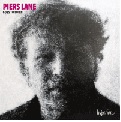 Hyperion
have a knack for programmes such as this; for instance, I much enjoyed A Maiden’s Prayer, Philip Martin’s enchanting array of miniatures
(review),
and The French Album with Stephen Hough (review).
Moreover, the sonics of both collections – played in a most engaging
and intimate style – are well up to the high standards of the house.
As usual I listened to the Studio Masters which, at £12, are slightly
more expensive than the equivalent CDs. Are they worth it? Yes, past
experience suggests they are, for the high-res sound on offer here is
as good as it gets. Throw in an easily navigable website, cover artwork
and good liner-notes and you have a very professional, well-presented
package for your money.
Hyperion
have a knack for programmes such as this; for instance, I much enjoyed A Maiden’s Prayer, Philip Martin’s enchanting array of miniatures
(review),
and The French Album with Stephen Hough (review).
Moreover, the sonics of both collections – played in a most engaging
and intimate style – are well up to the high standards of the house.
As usual I listened to the Studio Masters which, at £12, are slightly
more expensive than the equivalent CDs. Are they worth it? Yes, past
experience suggests they are, for the high-res sound on offer here is
as good as it gets. Throw in an easily navigable website, cover artwork
and good liner-notes and you have a very professional, well-presented
package for your money.
Pianist Piers Lane presents an enticing selection of pieces, many of
which could be categorised as light music/easy listening. That’s not
to say they’re anodyne or without their challenges; indeed, even wistful
little works such as Katharine Parker’s Down Longford Way require
a certain discipline and sense of style if they are to be more than
background music to a meal. Lane’s detailing here is exquisite, and
the recording is warm and clear. The two Toccatas – one written
especially for him – are crisply done, and while there’s a pleasing
geniality to these scores they are not without an underlying rigour.
Programming is everything in such collections, and the more formal pieces
are neatly interleaved with lighter, more expansive ones. John Ireland’s
Ballerina pirouettes most delicately, and Lane’s judicious use of rubato ensures the music never sounds florid or self-indulgent. The poise and
focus of Myra Hess’s Bach arrangement – played with symmetry and soul
– is a joy to hear. Dynamics are subtly shaded and, oh, what a gorgeous,
glowing piano tone. As for Mayerl’s bright-faced marigolds they nod
cheerfully in the sunlight, and the lilt of the Delibes/Dohnányi
waltz is a delight. Teasingly tuneful, brimming with brio and ever so
slightly swoopy the latter is a real charmer.
Rachmaninov’s fragile Daisies highlights Lane’s expressive range, Zez
Confrey’s Dizzy Fingers and Mark Saya’s Barcarolles his
supple rhythms and wonderful sense of touch. Neither is overblown; indeed,
the entire programme is perfectly executed and proportioned. Even the
iconic A nightingale sang in Berkeley Square – so discreetly
delivered – is as evocative as ever. Poulenc Bal fantôme is a pearl of a piece, small and beautifully formed, and Alec Templeton’s Bach goes to town and Arthur Benjamin’s Jamaican Rumba really do go with a swing and a sway.
The rest of the programme is just as seductive, from the now passionate,
now gentle Tiger Tango and the dynamic contrasts of Antony Hopkins’ Variations on a well-known theme to the glittering little Arabesque by Karg-Elert and Grainger’s musty-eyed but never mawkish Derry tune.
Sandwiched in between the last two is Lane’s version of Dudley Moore’s
Beethoven parody, And the same to you. The irrepressible, multi-talented
Moore is a hard act to follow, and while Lane is hardly a dud he’s not
the impish Dud either.
I can’t possibly end on a note of equivocation, for this pianist’s easeful
playing and generosity of spirit makes this a must have for all pianophiles.
Indeed, the combination of exemplary musicianship and top-notch sound
adds up one of the best piano recordings I’ve heard this year.
Chockful of good things; Hyperion’s done it again.
Dan Morgan
http://twitter.com/mahlerei
Music of France: Volume 1
Ambroise THOMAS (1811-1896) Mignon Overture [8:25]
National Symphony Orchestra/Anatole Fistoulari – rec. 1945 ADD/mono
Camille SAINT-SAËNS (1835-1921) Piano Concerto No.2 in g
minor, Op.22 [22:21]
Moura Lympany (piano)
London Philharmonic Orchestra/Jean Martinon – rec. 1951 ADD/mono
Georges DUKAS (1865-1935) L’Apprenti sorcier [9:51]
Israel Philharmonic Orchestra/Georg Solti -rec. 1957. ADD/stereo
Claude DEBUSSY (1862-1918) La Mer [23:07]
Boston Symphony Orchestra/Charles Munch – rec. 1958. ADD/stereo
BEULAH 1PD87 [63:44] – available soon from amazon.co.uk and iTunes.
 Beulah
have already embarked on an attractive series of albums of reissues
of classic performances of English music. On the basis of this first
volume of a similar French venture, the omens are already looking good.
The stand-out on volume 1 is Solti’s L’Apprenti sorcier. The
recording was hailed on its appearance, coupled with Respighi’s Rossini
confection, La Boutique fantasque, as ‘excellent light music
to show off your new stereo equipment to good advantage’ – a decent
second-hand copy was one of my first stereo LPs – and it still sounds
very well indeed in this transfer. Just two small niggles: Beulah have
already released this on its own (Beulah Extra 1BX16 – July
2010) and, as received for review, it follows too hard on the end
of the Saint-Saëns.
Beulah
have already embarked on an attractive series of albums of reissues
of classic performances of English music. On the basis of this first
volume of a similar French venture, the omens are already looking good.
The stand-out on volume 1 is Solti’s L’Apprenti sorcier. The
recording was hailed on its appearance, coupled with Respighi’s Rossini
confection, La Boutique fantasque, as ‘excellent light music
to show off your new stereo equipment to good advantage’ – a decent
second-hand copy was one of my first stereo LPs – and it still sounds
very well indeed in this transfer. Just two small niggles: Beulah have
already released this on its own (Beulah Extra 1BX16 – July
2010) and, as received for review, it follows too hard on the end
of the Saint-Saëns.
Fistoulari’s Mignon Overture, from 1945, could hardly be expected
to sound as well but in Beulah’s transfer it hardly shows its age and
the performance was well worth preserving.
By the time that Moura Lympany’s Saint-Saëns was reissued in bogus
stereo on Decca Eclipse in 1974, it sounded badly dated. About the quality
of the solo performance and the orchestral support, however, there has
never been any doubt and Olympia produced a much better CD transfer
in 1989 – now sunk with the rest of that label. I didn’t hear that Olympia
version but I doubt if it bettered this Beulah reissue which has tidied
the sound up to a degree that we can appreciate the Lympany’s performance.
It’s still a bit thin, but much more than tolerable. Even if you have
a more recent recording, such as Stephen Hough’s award-winning set of
all the concertos (Hyperion CDA67331/2 – review)
or Jean-Yves Thibaudet (Nos. 2 and 5, Decca 4758764 – review),
this Beulah reissue is well worth the small outlay.
Beulah give the date 1958 for the Munch La Mer but the penultimate
time that it was reissued, on an RCA Papillon CD, the date given was
December 1956. No matter – it, too, has come up well and the performance,
if not quite in the same league as the Lympany and Solti items, is well
worth preserving.
Light Music Recording of the Month
 Swingin’
at Maida Vale: The Decca Sessions 1936-1944
Swingin’
at Maida Vale: The Decca Sessions 1936-1944
Benny Carter and his Orchestra with Elizabeth Welch (vocalist) – rec.
1936 ADD/78s
George Shearing – rec. 1939-1944 ADD/78s
BEULAH 1PD36 [71:19] – due for release by Amazon and iTunes (mp3)
 This
release, taking its title from the opening track, is self-recommending
to fans of dance band music – and I’m one of them, despite my predilection
for more serious fare such as renaissance polyphony. I enjoyed this
very much and the transfers belie the age of the recordings; one or
two tracks betray a degree of surface presence rather than hiss or crackle
and even these are not off-putting, while the rest are almost completely
noise-free. This album is choc-a-bloc with foot-tapping music well performed
and in sound that is still well worth hearing. You will, however, have
to excuse the repeated typo of Madia for Maida.
This
release, taking its title from the opening track, is self-recommending
to fans of dance band music – and I’m one of them, despite my predilection
for more serious fare such as renaissance polyphony. I enjoyed this
very much and the transfers belie the age of the recordings; one or
two tracks betray a degree of surface presence rather than hiss or crackle
and even these are not off-putting, while the rest are almost completely
noise-free. This album is choc-a-bloc with foot-tapping music well performed
and in sound that is still well worth hearing. You will, however, have
to excuse the repeated typo of Madia for Maida.
The Benny Carter tracks, made when he was working in England with Henry
Hall, cost over £1 when they were reissued on the budget Decca
Ace of Clubs label in 1964 – that’s at least £25 in today’s values.
Add the George Shearing half of the album – even in an era when the
likes of Carroll Gibbons, Joe Loss, Ambrose and Billy Cotton were at
the height of their powers his recordings were sought after – and you
see what a bargain the Beulah reissue is.
